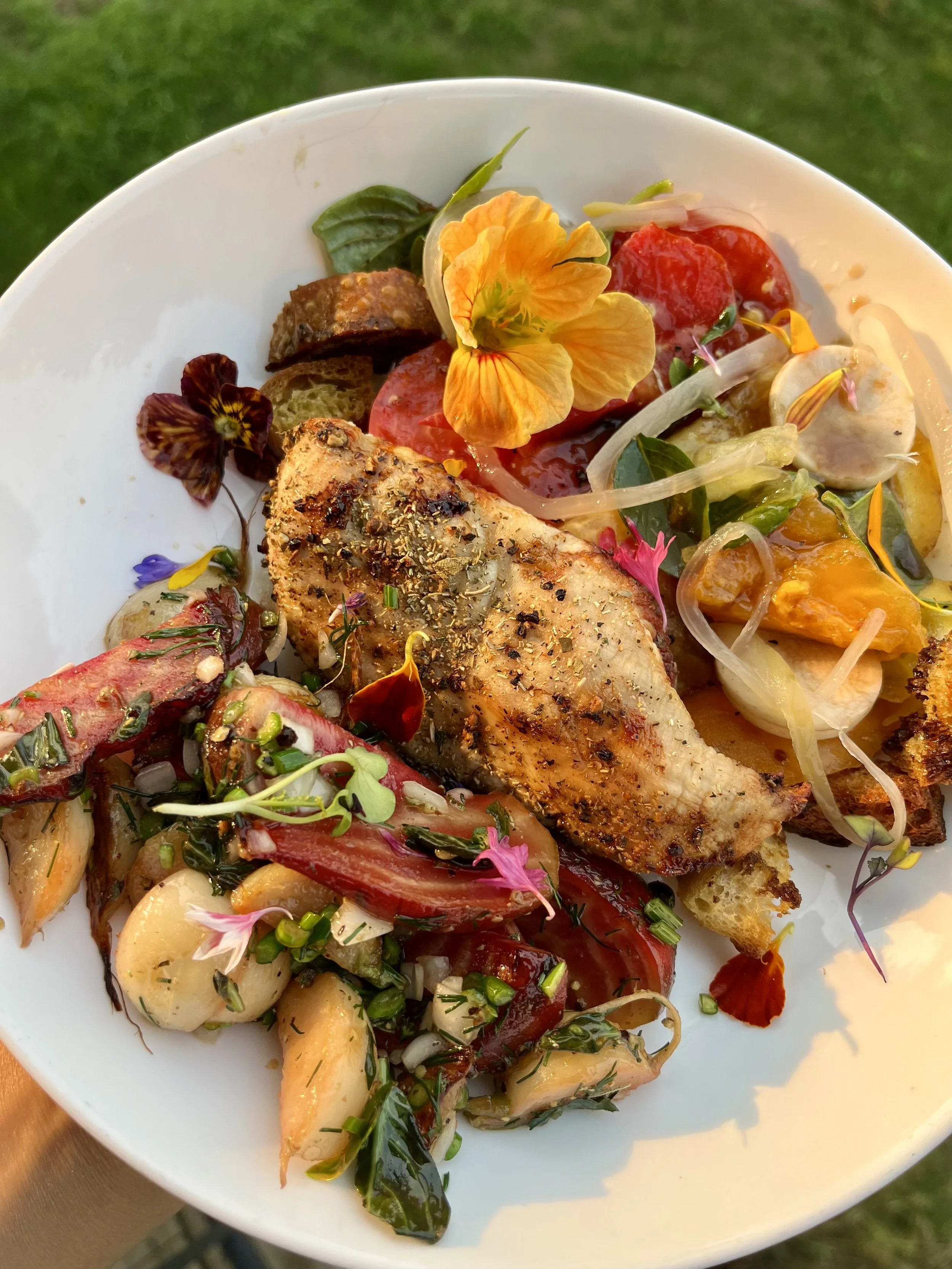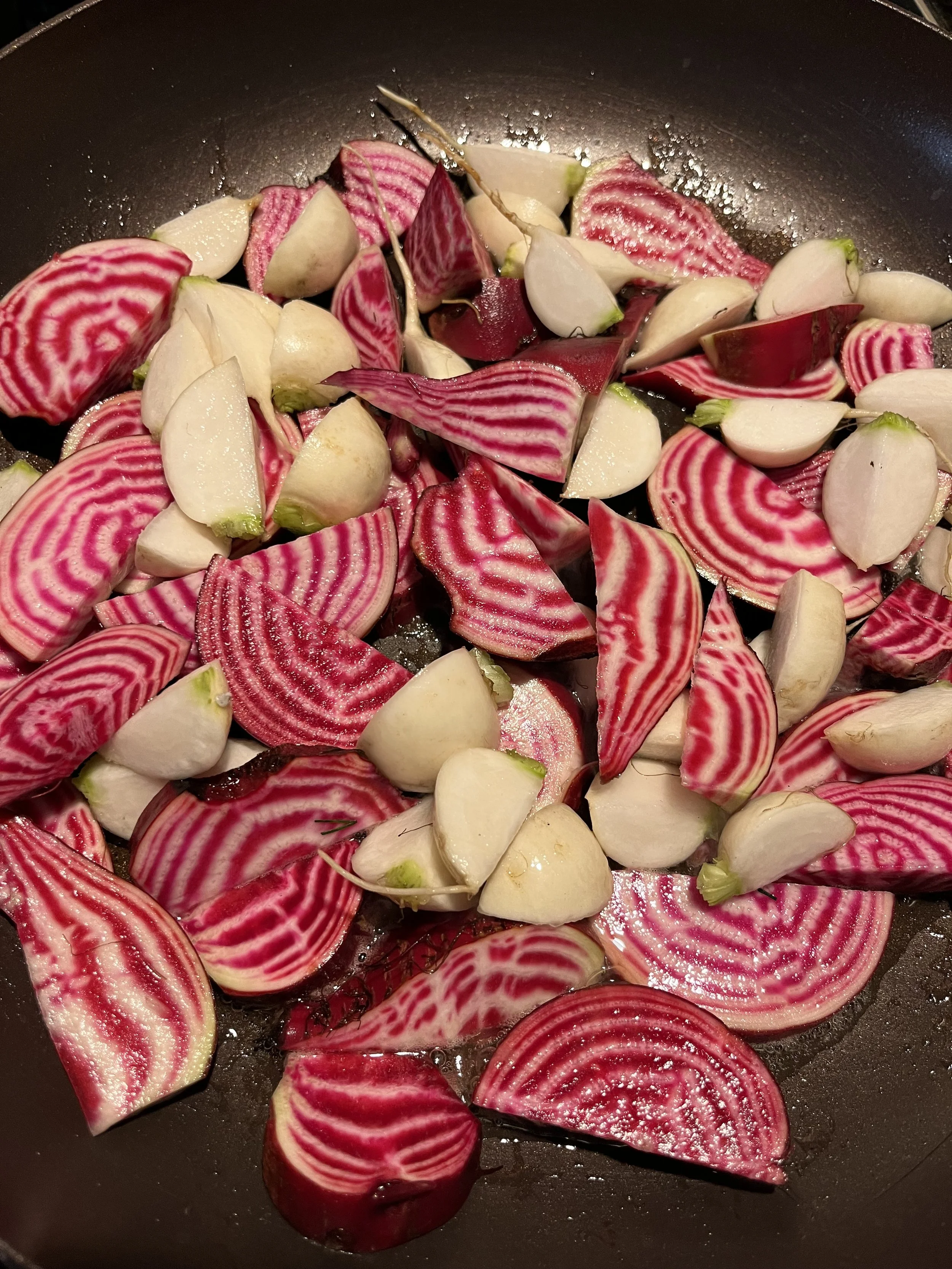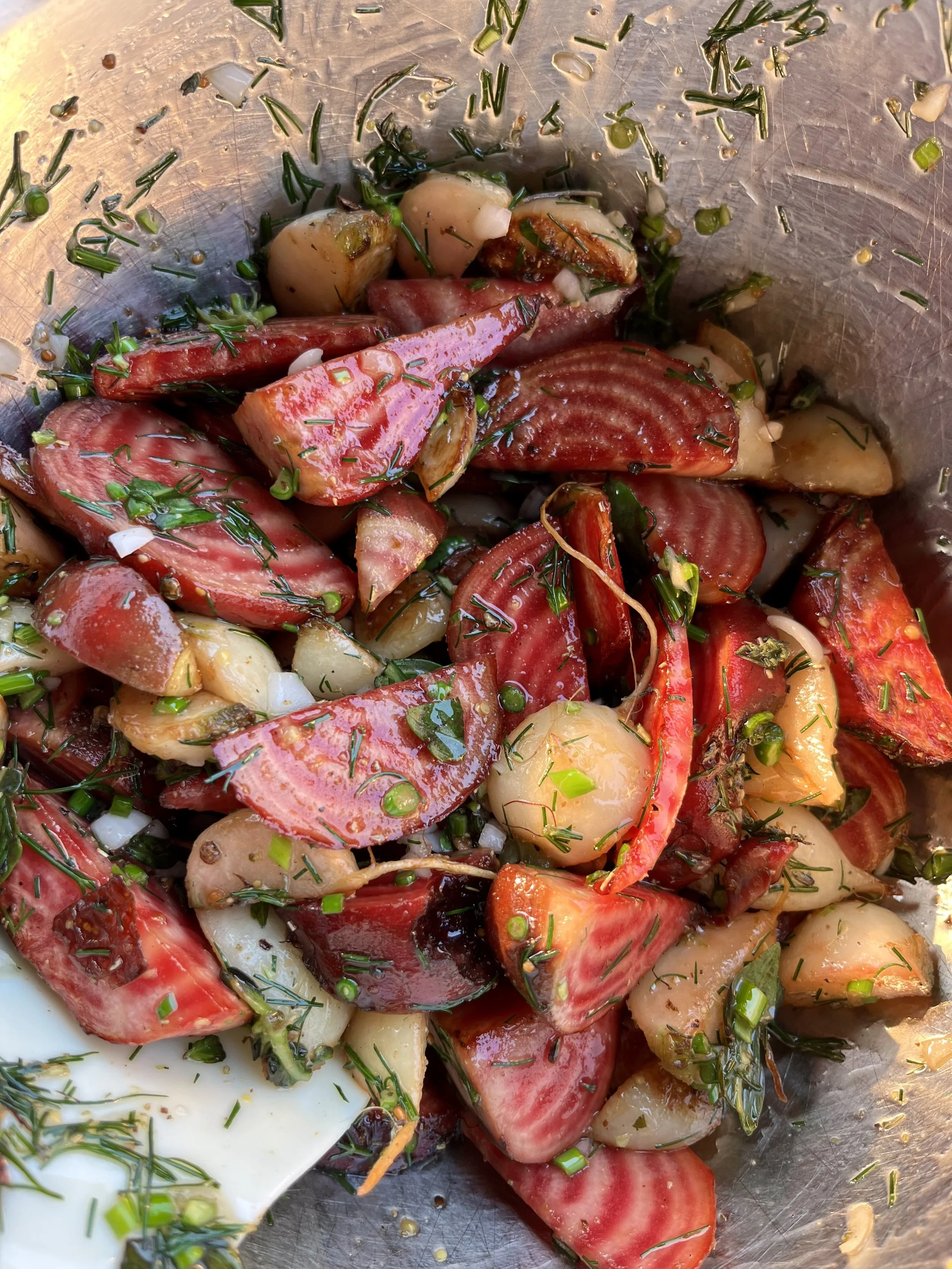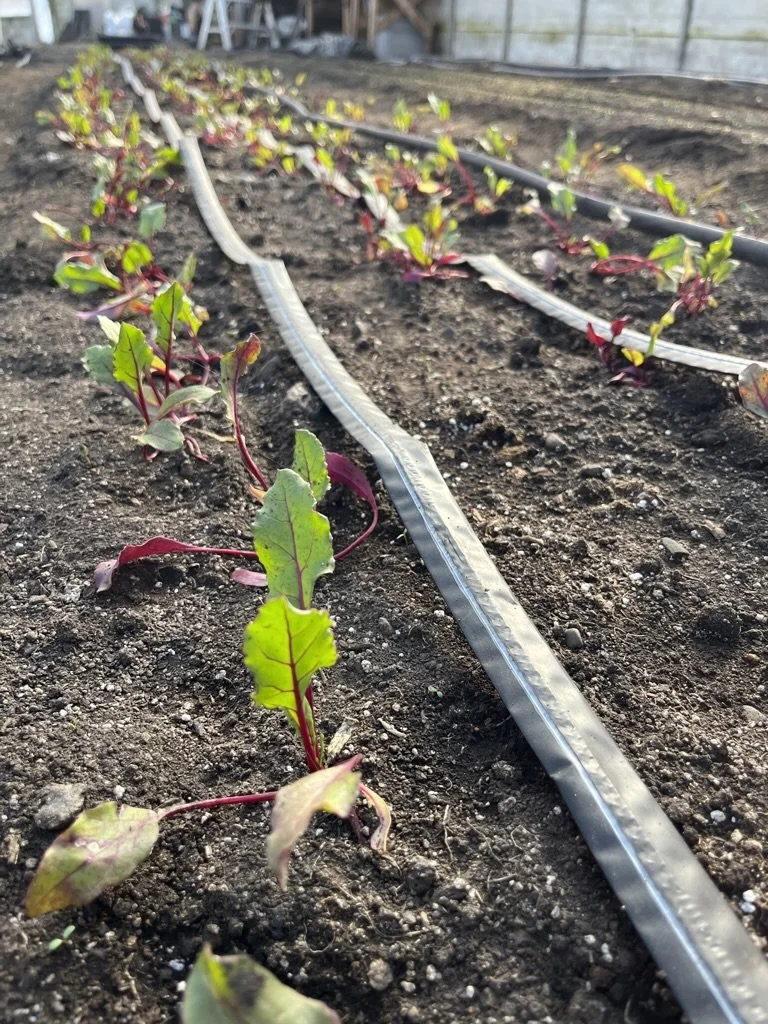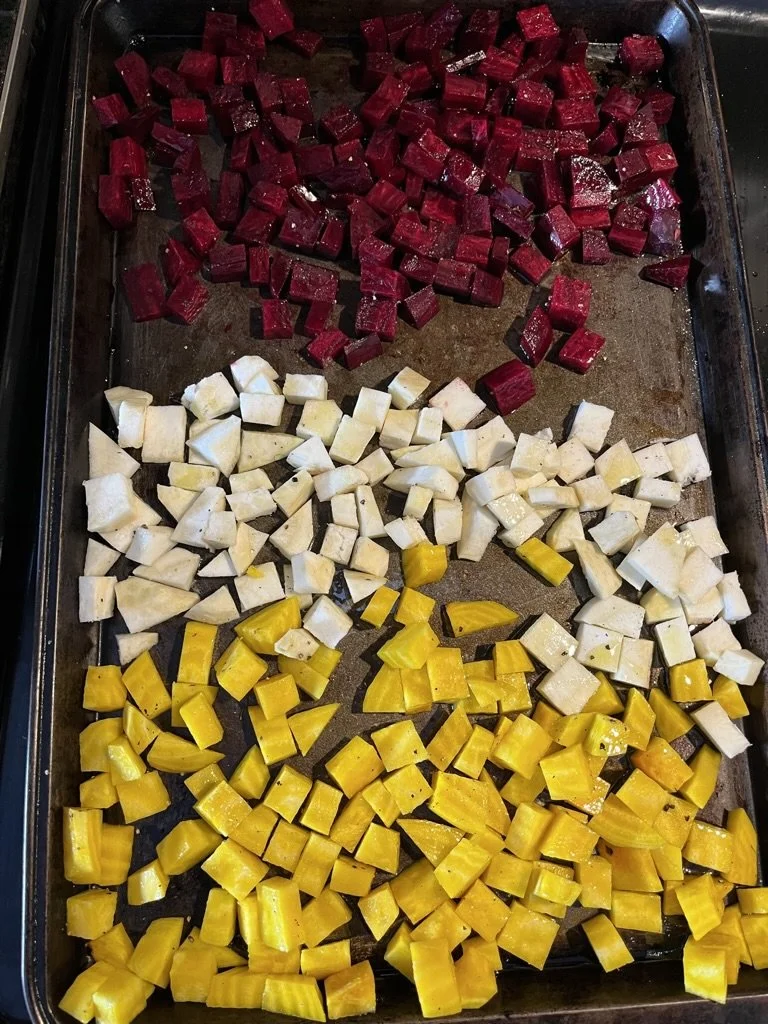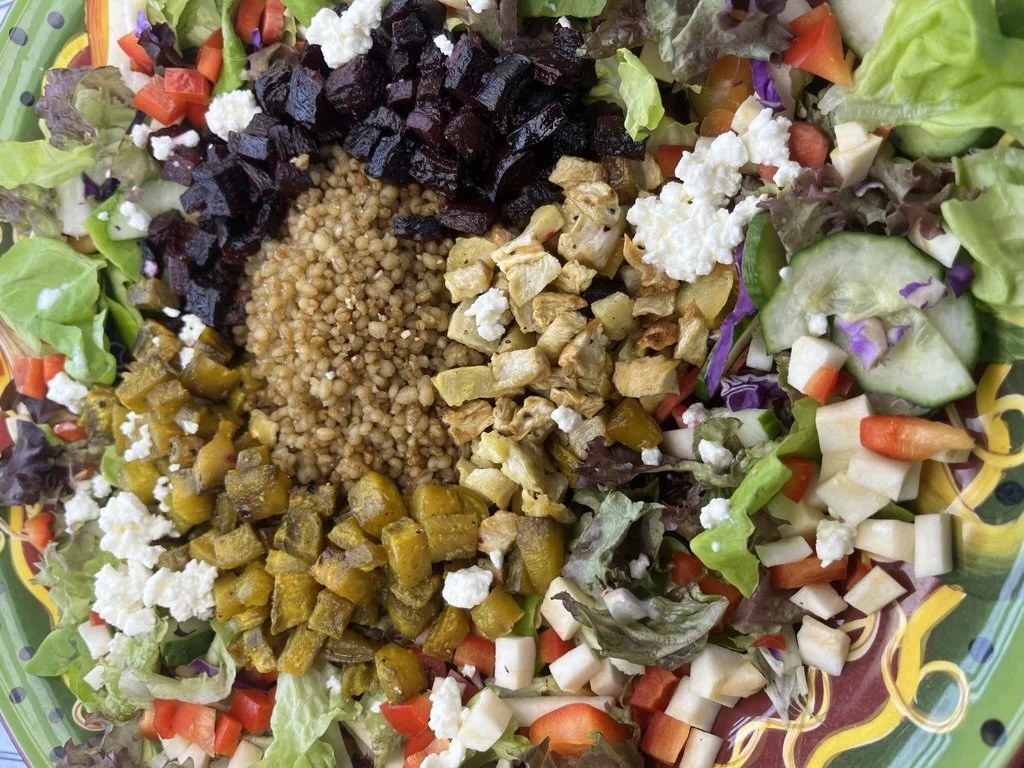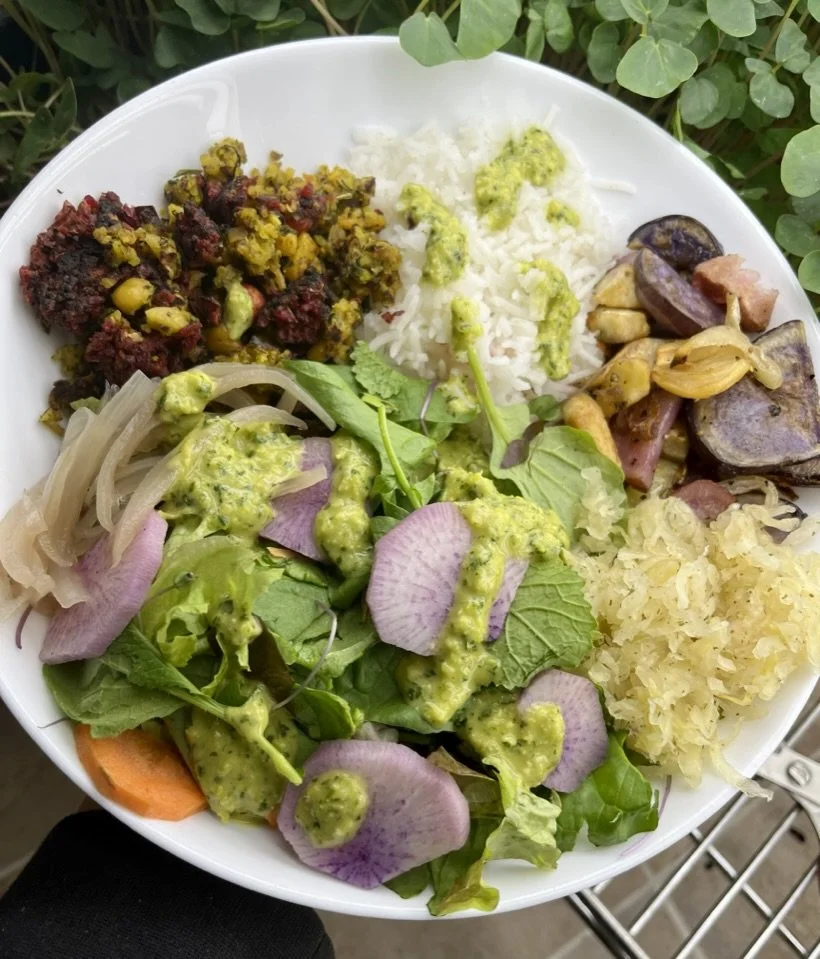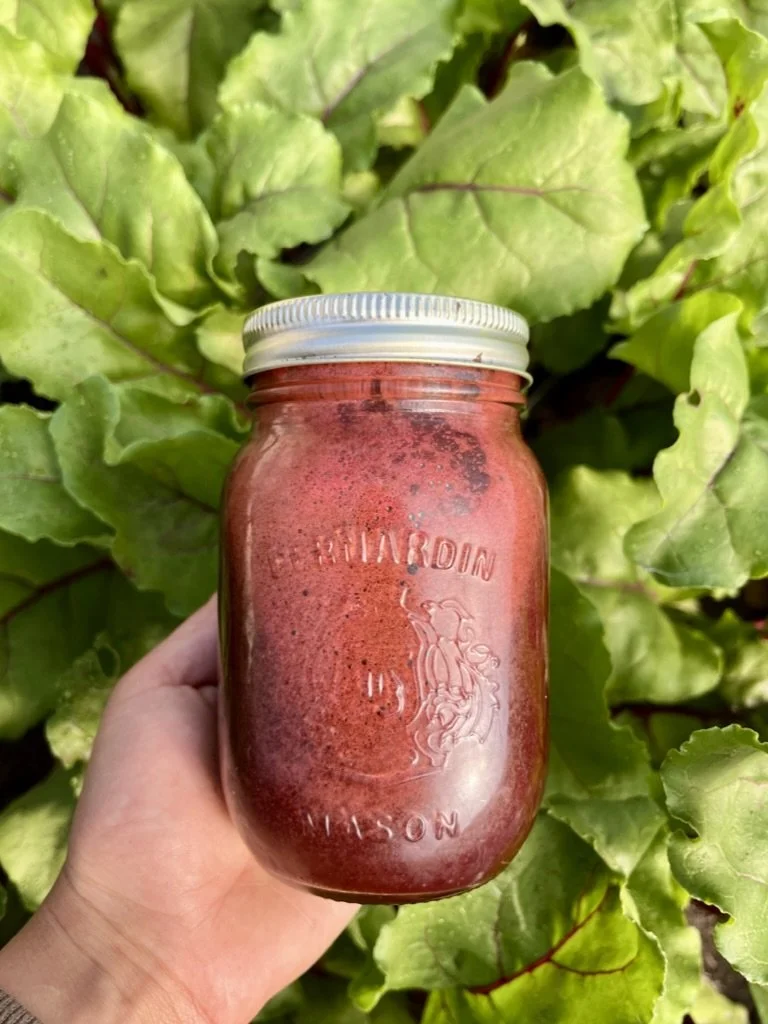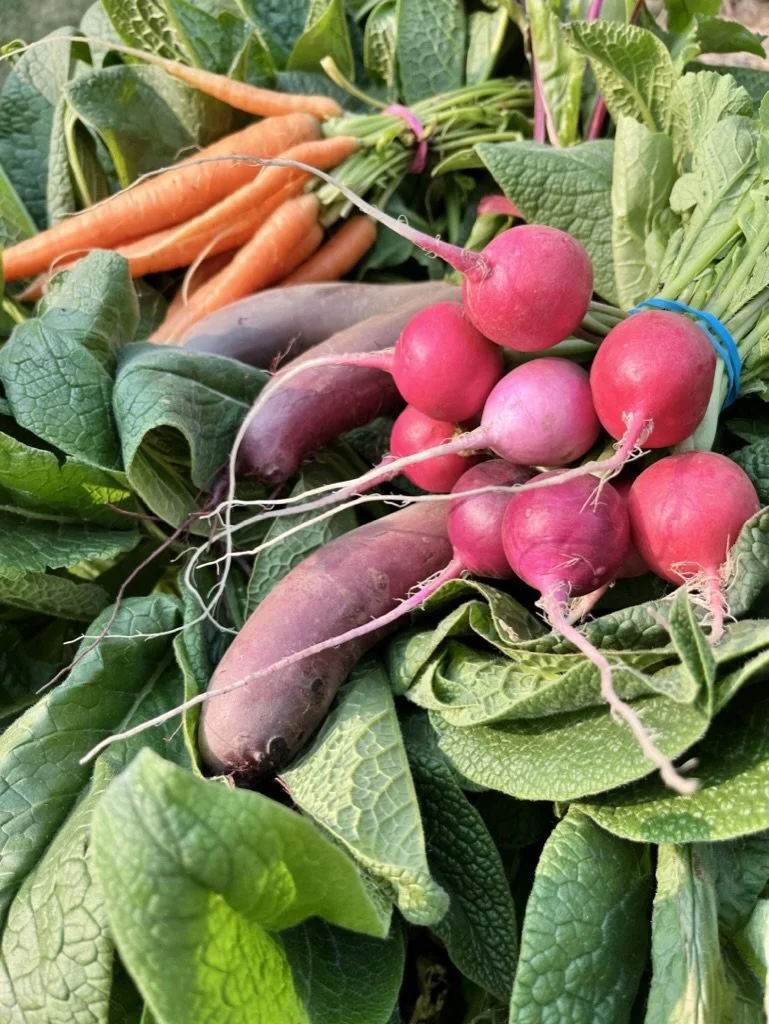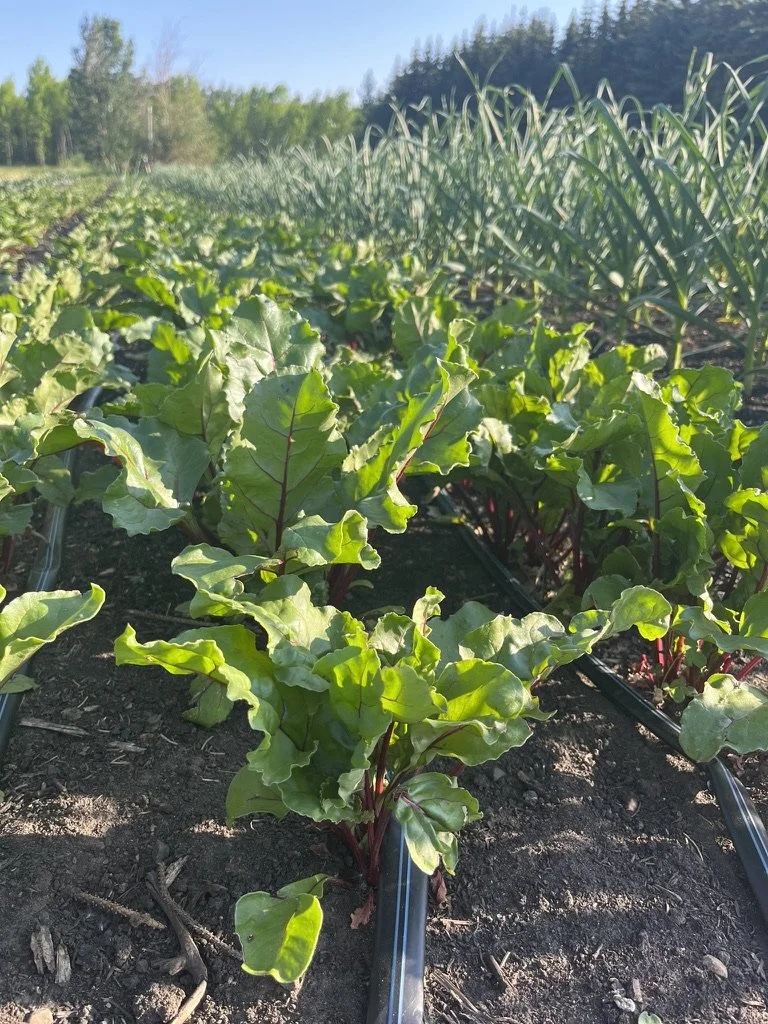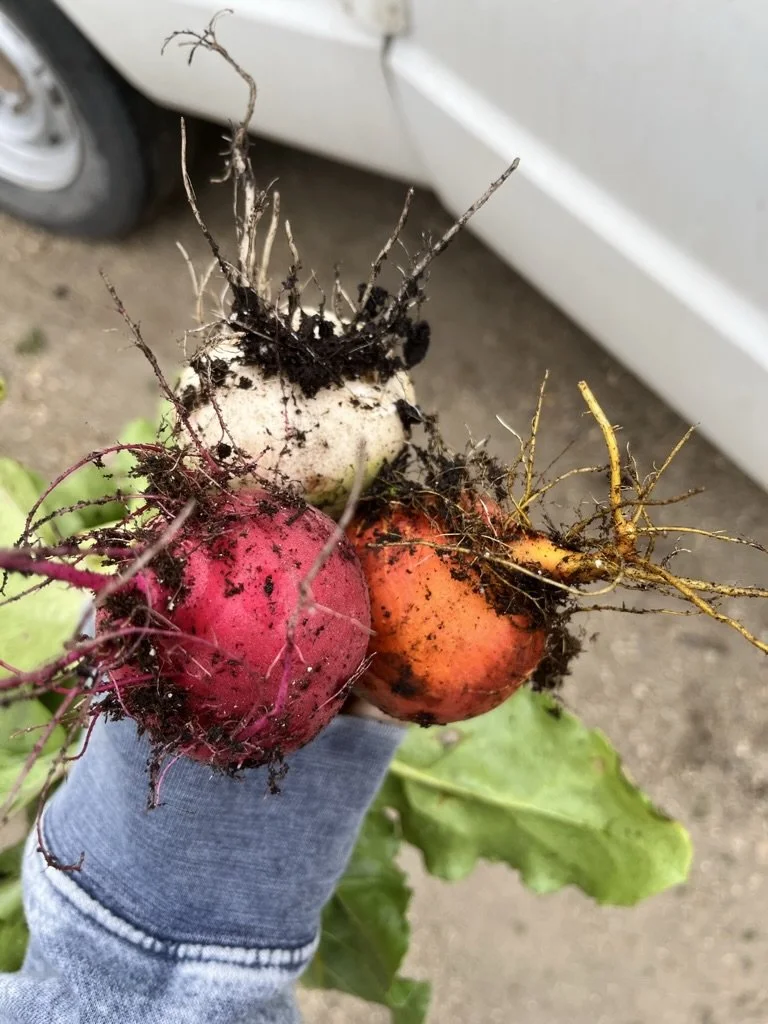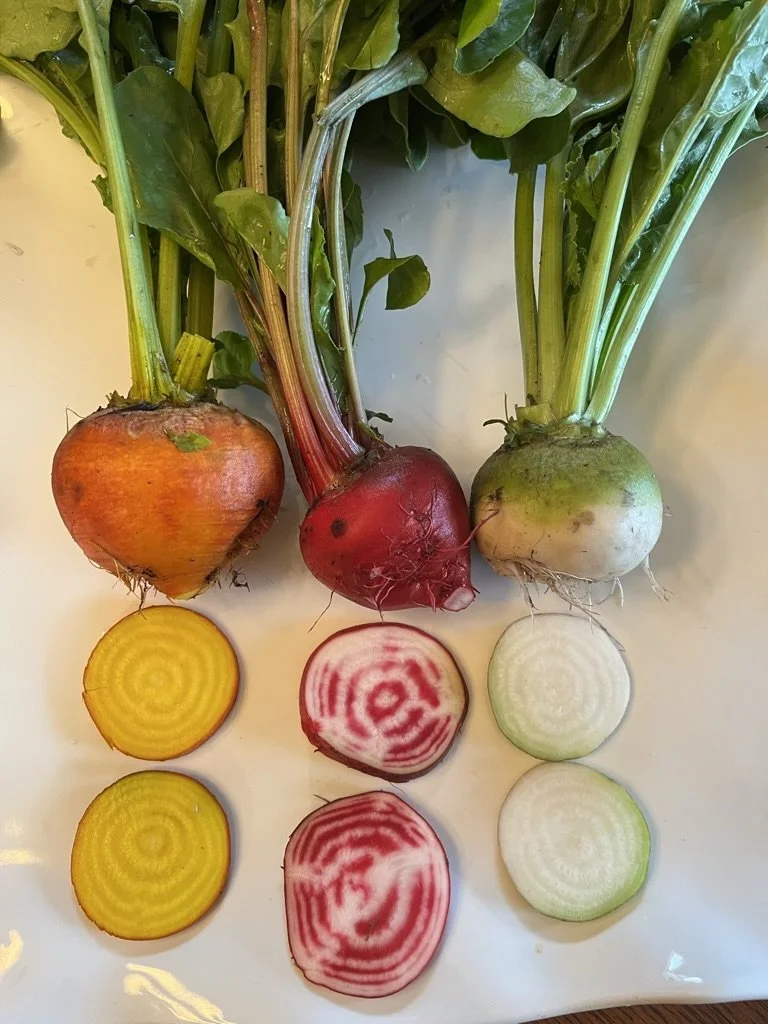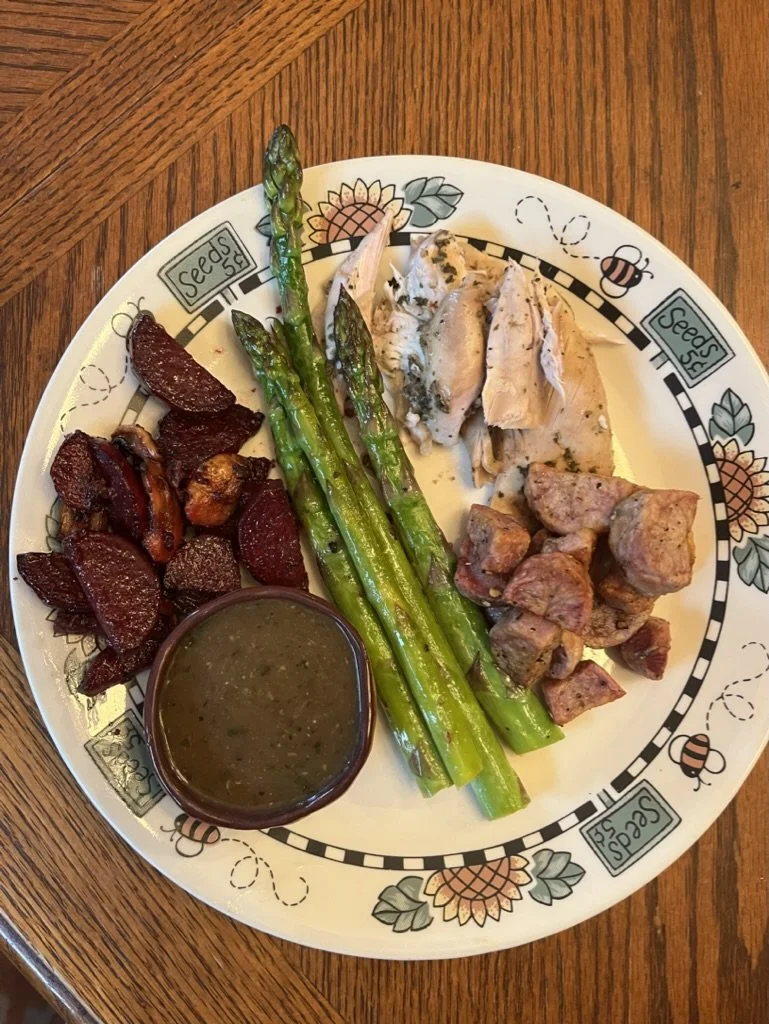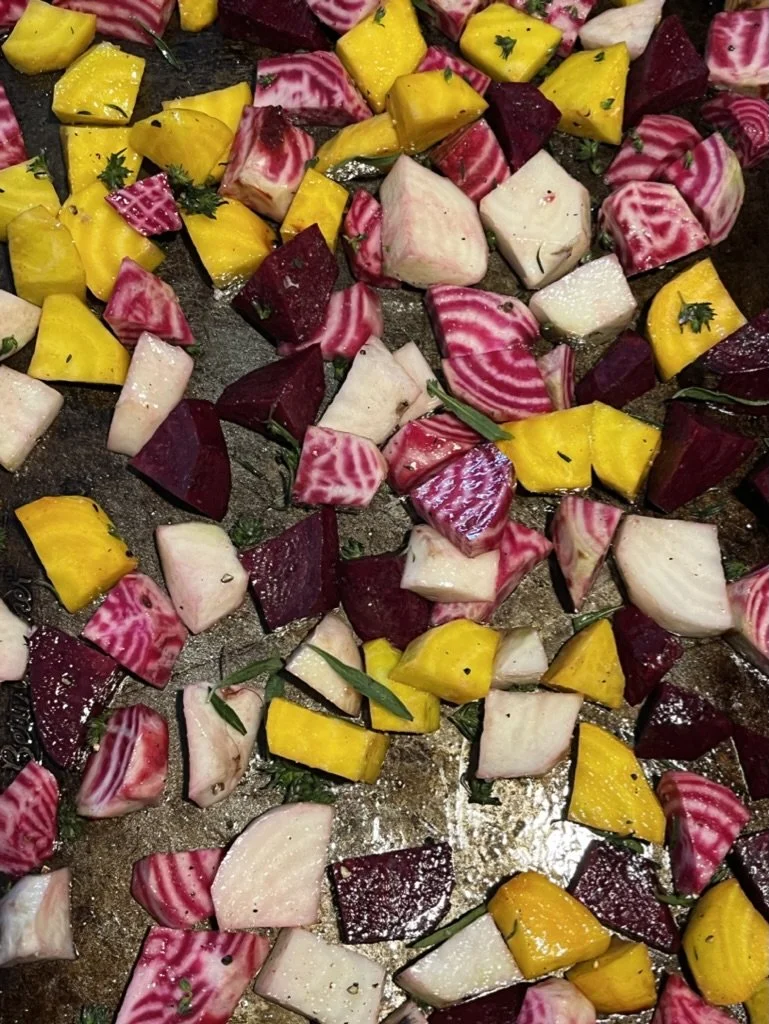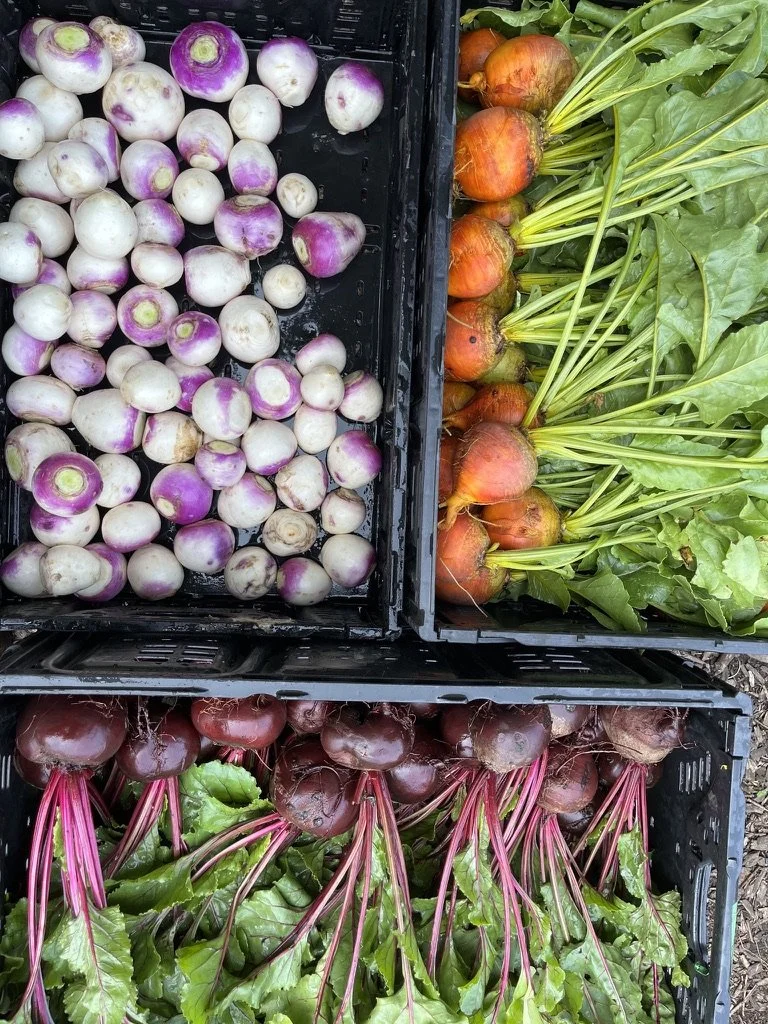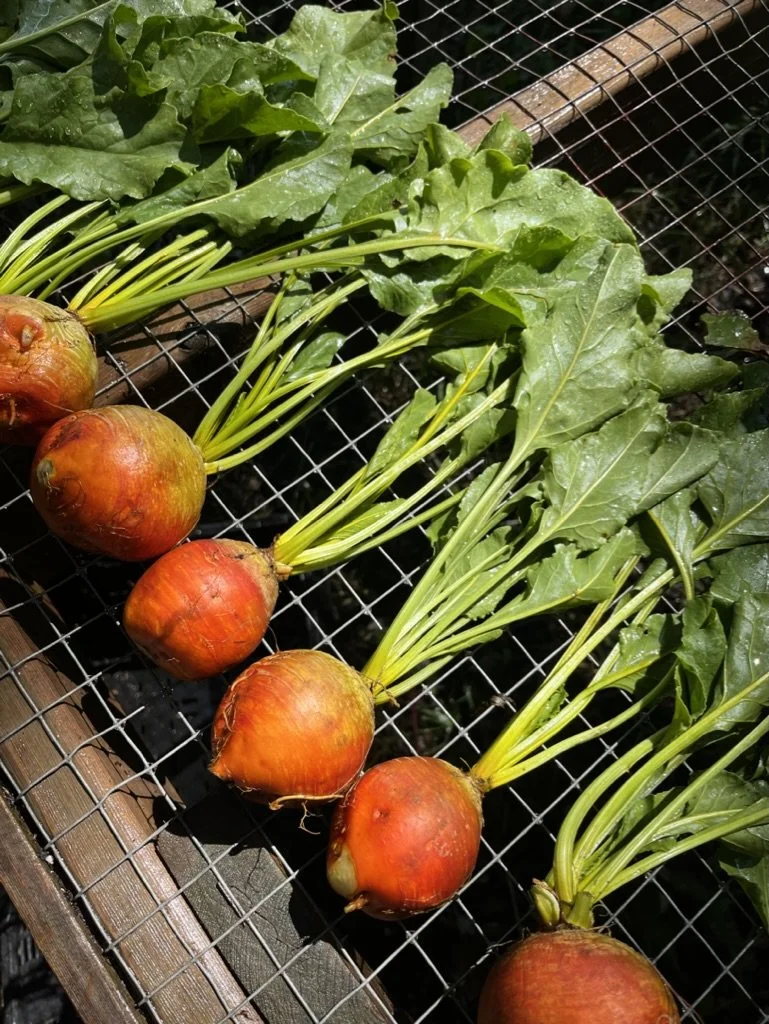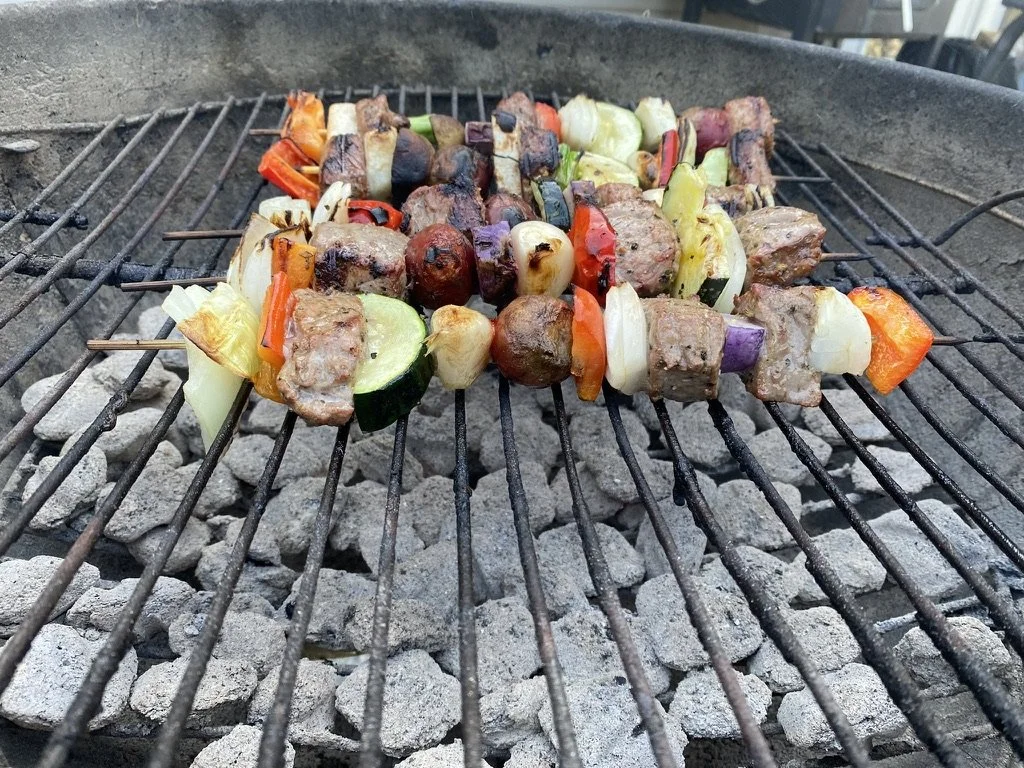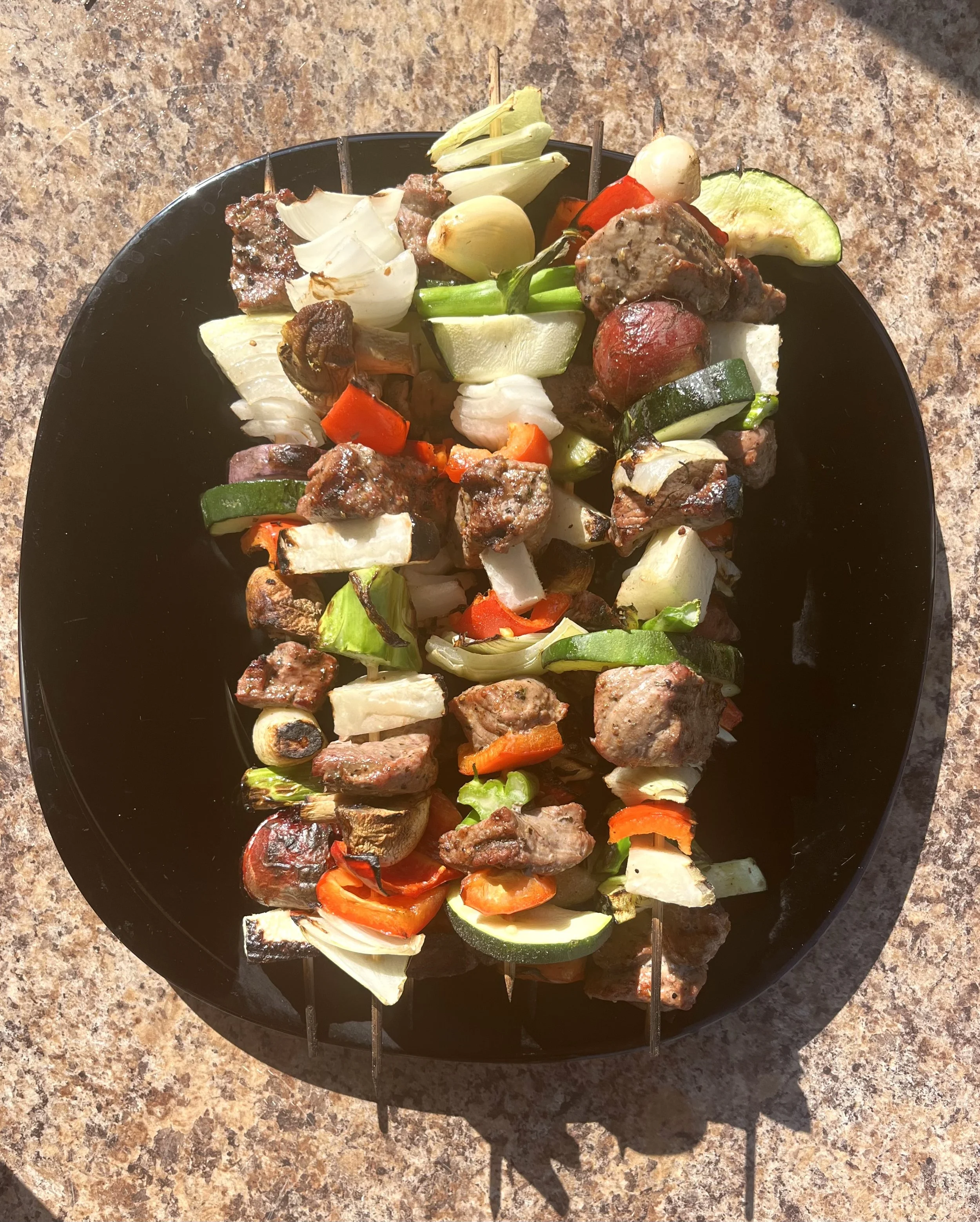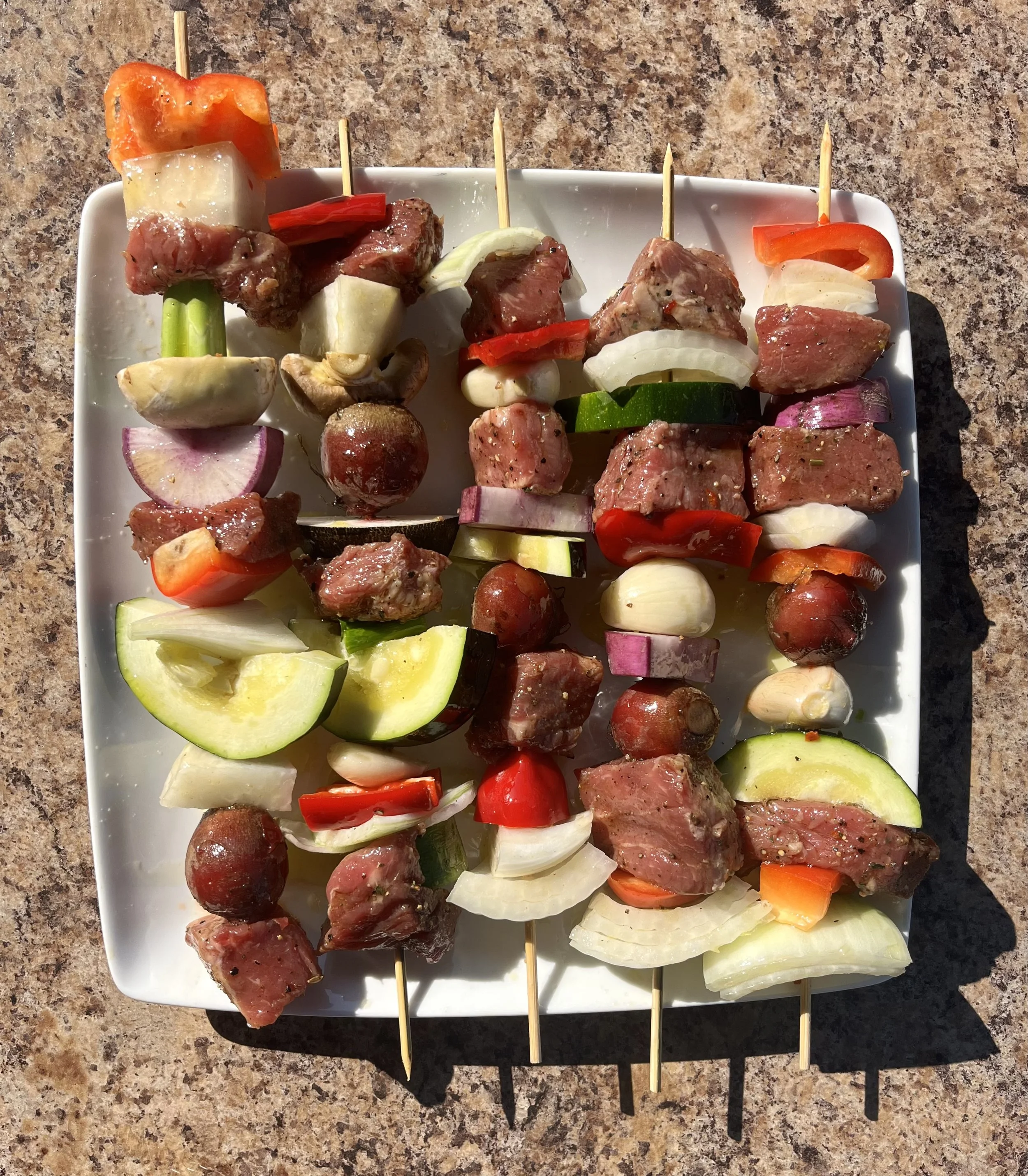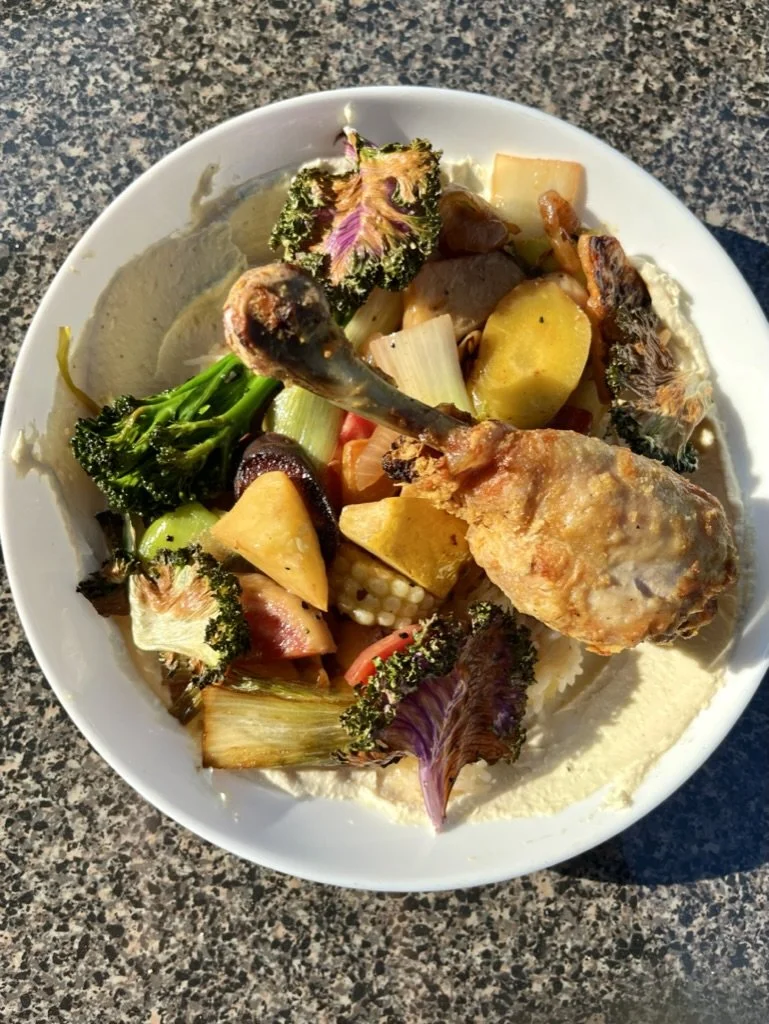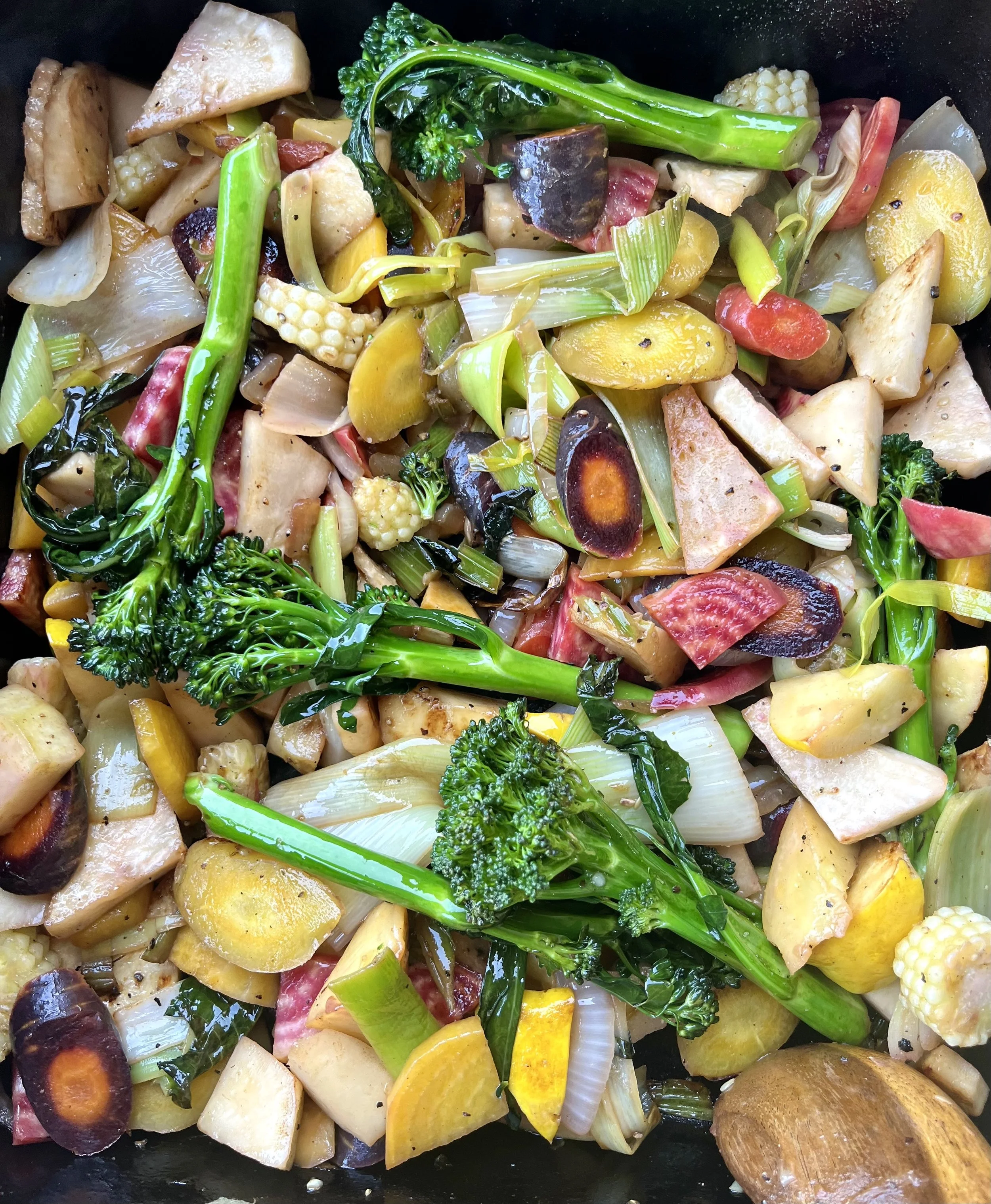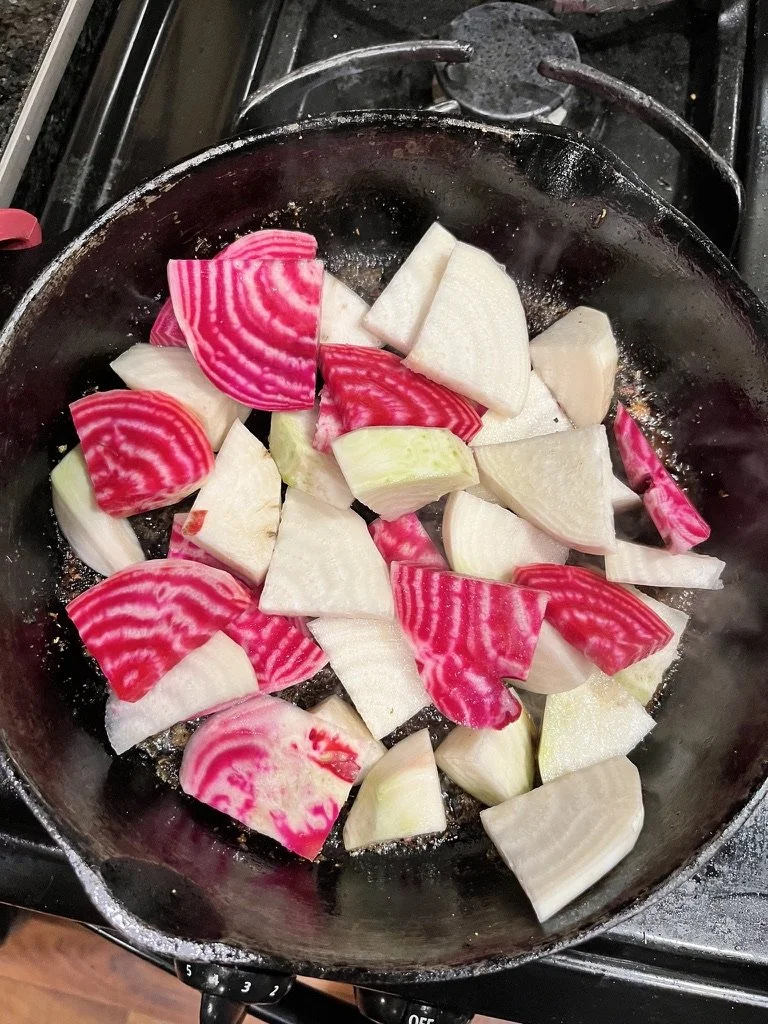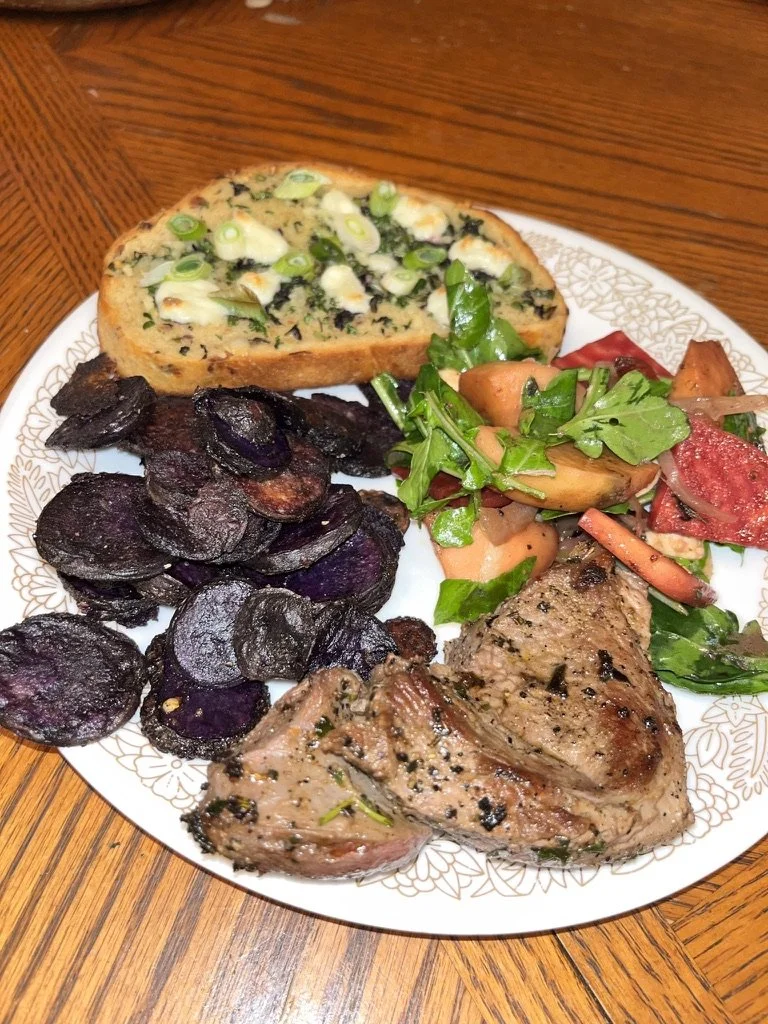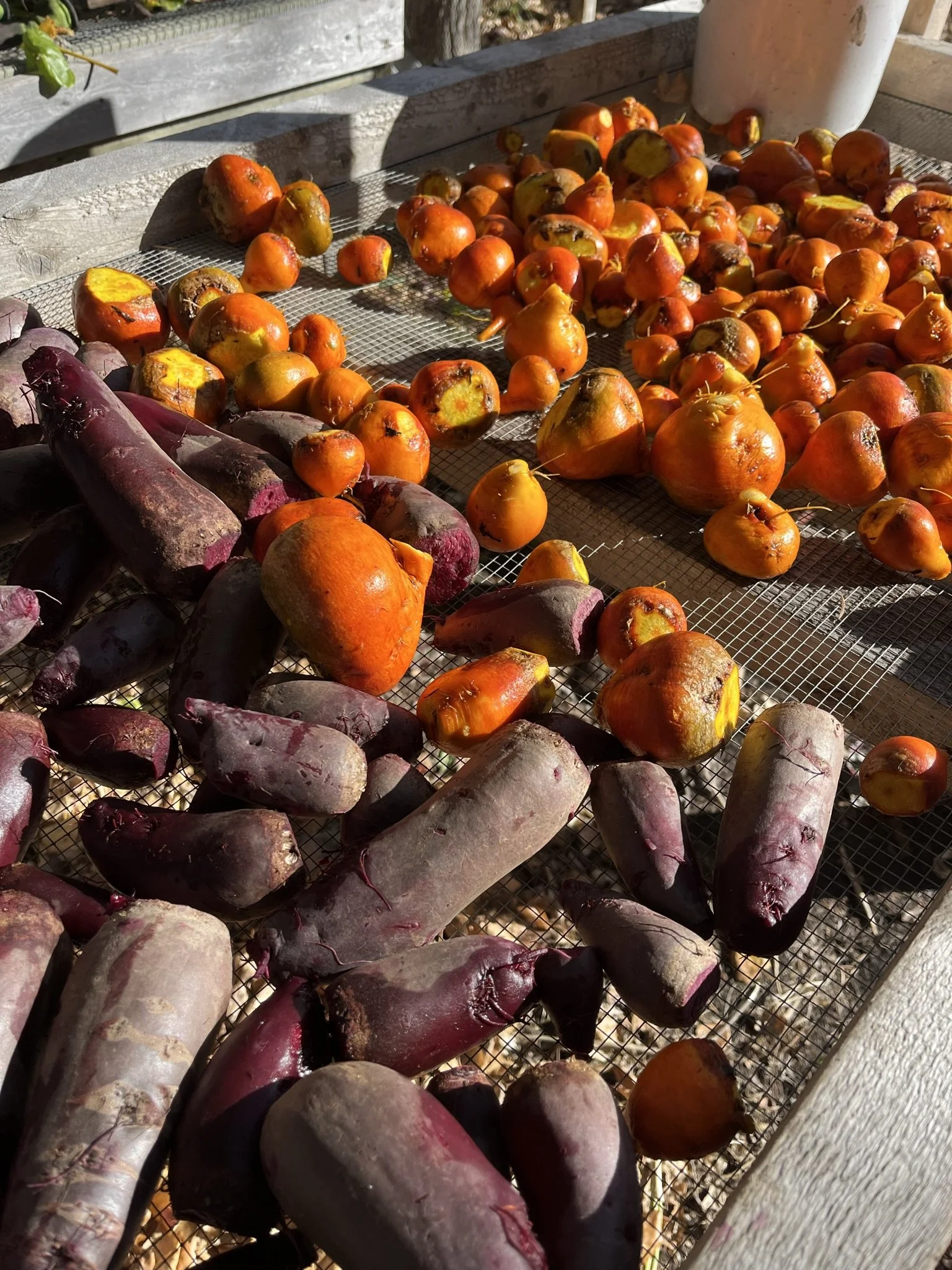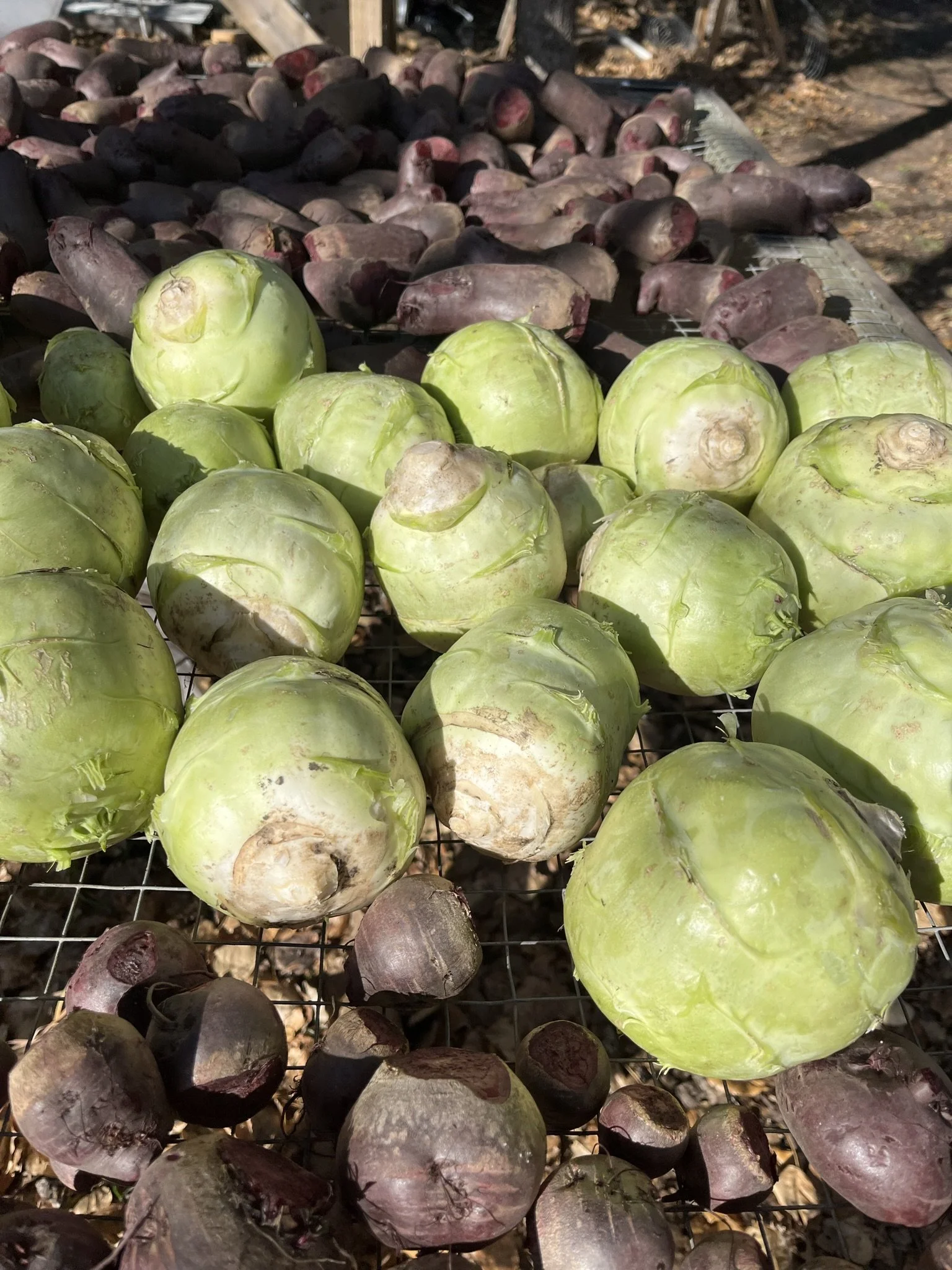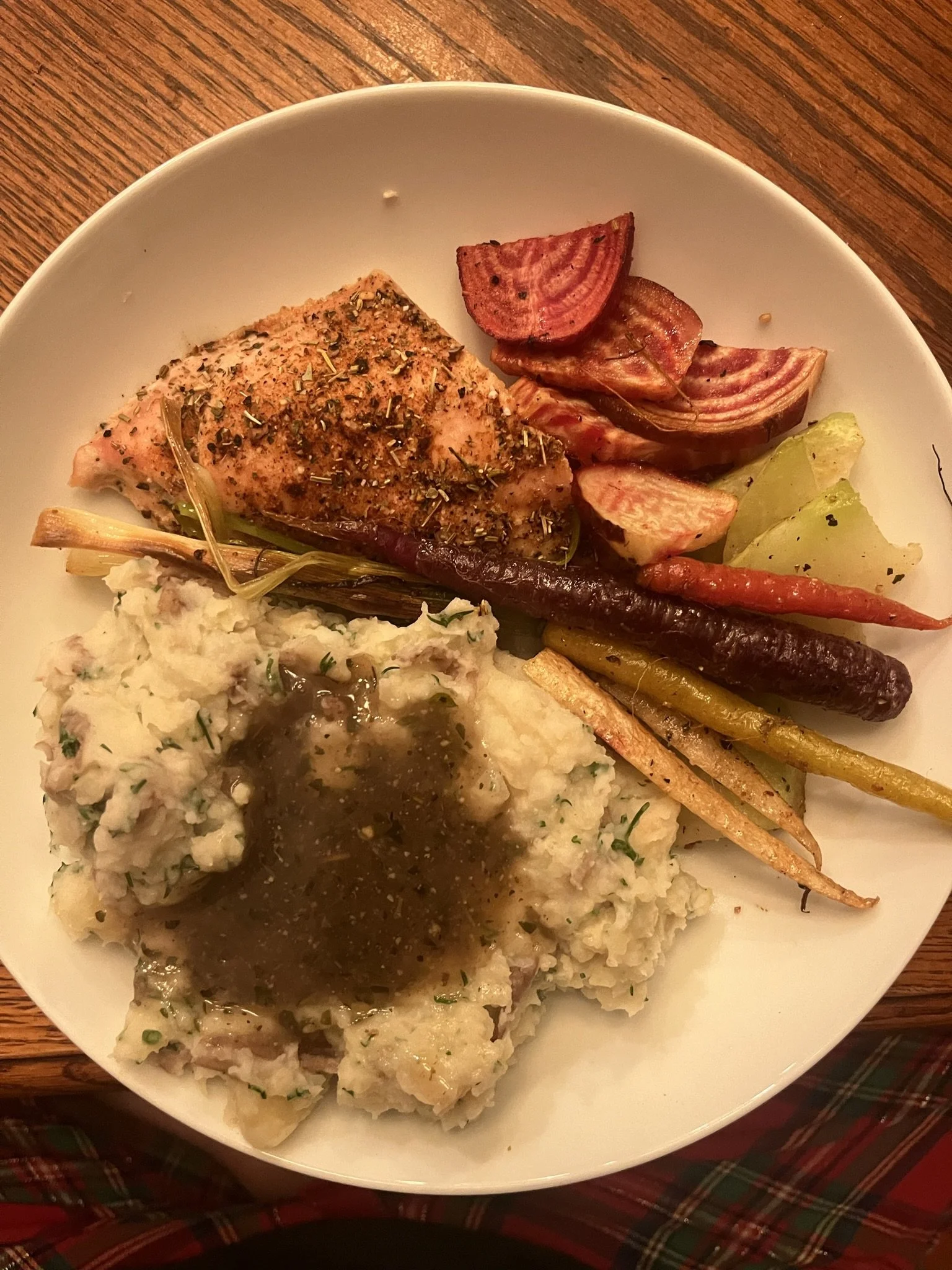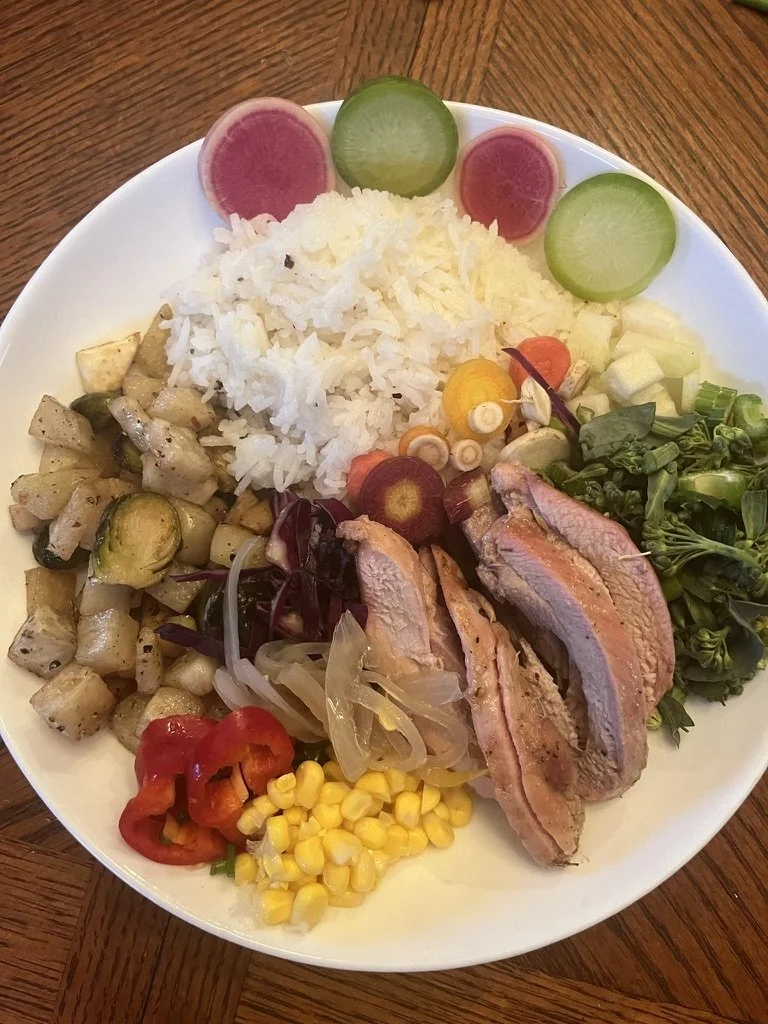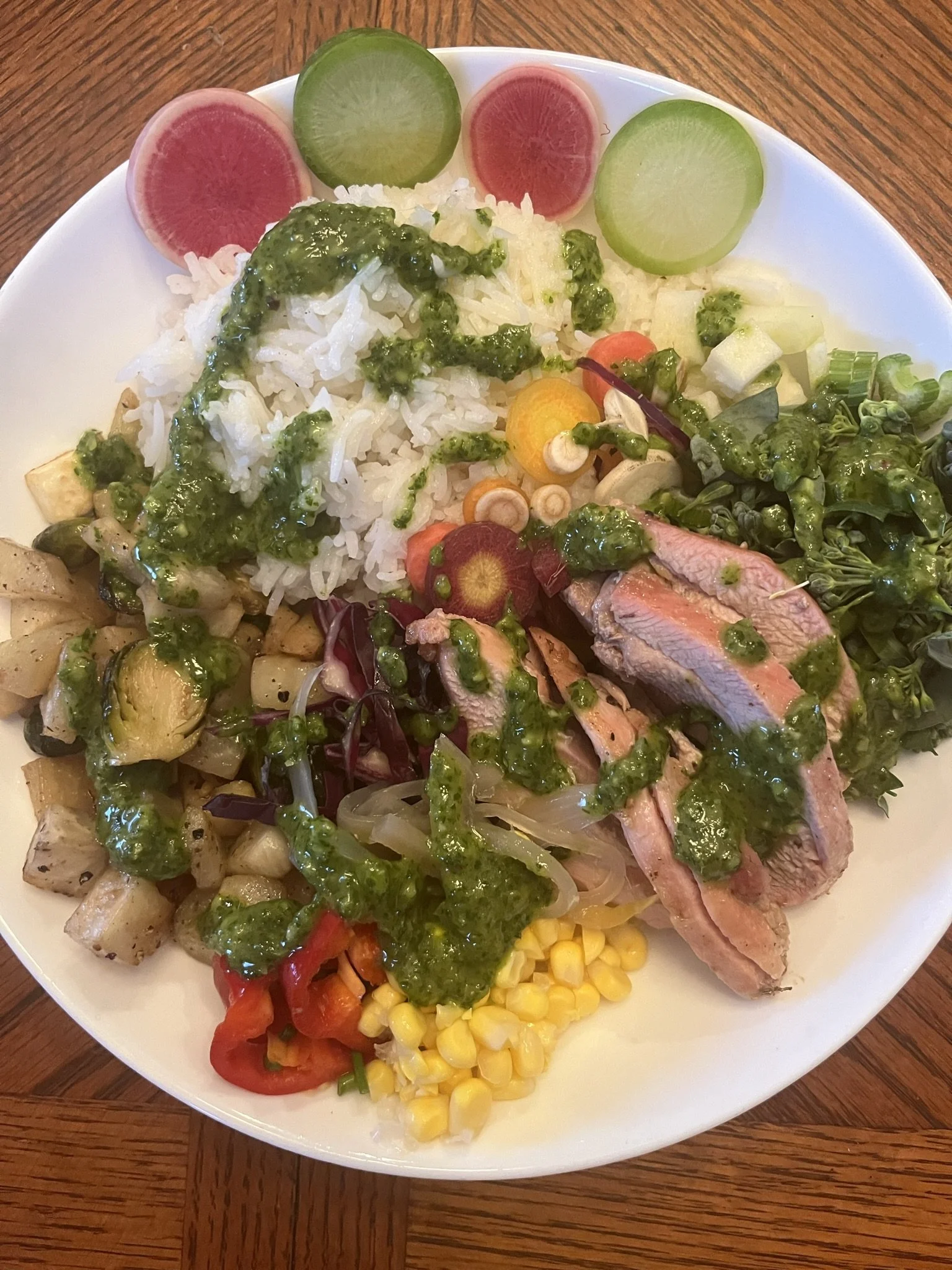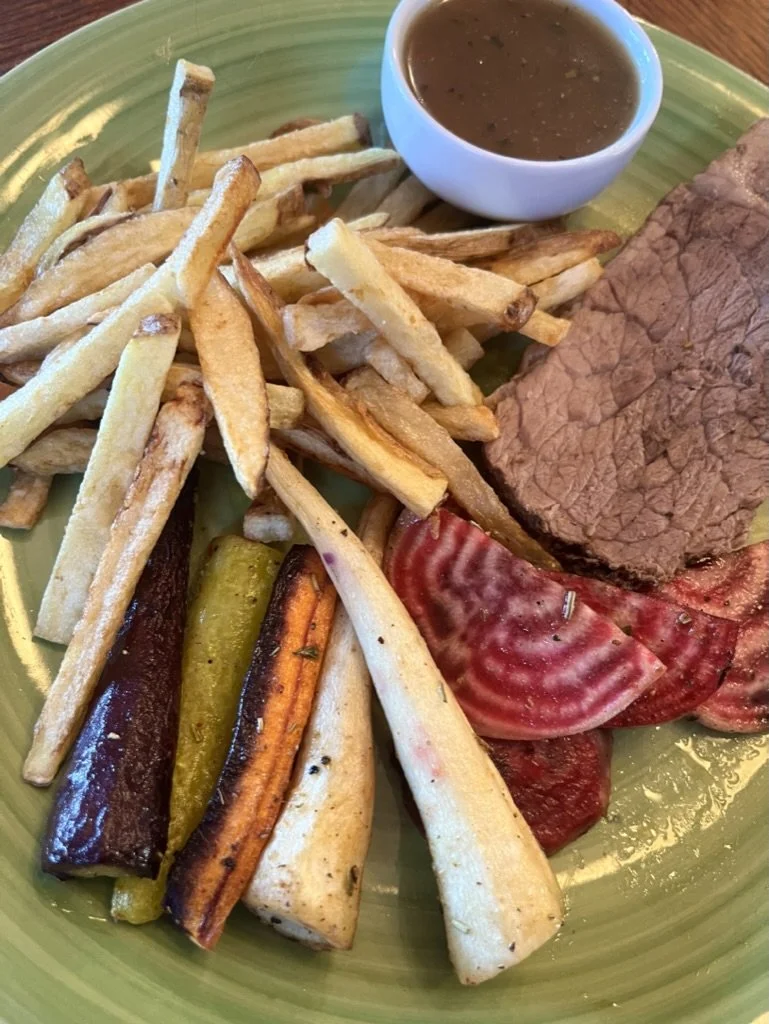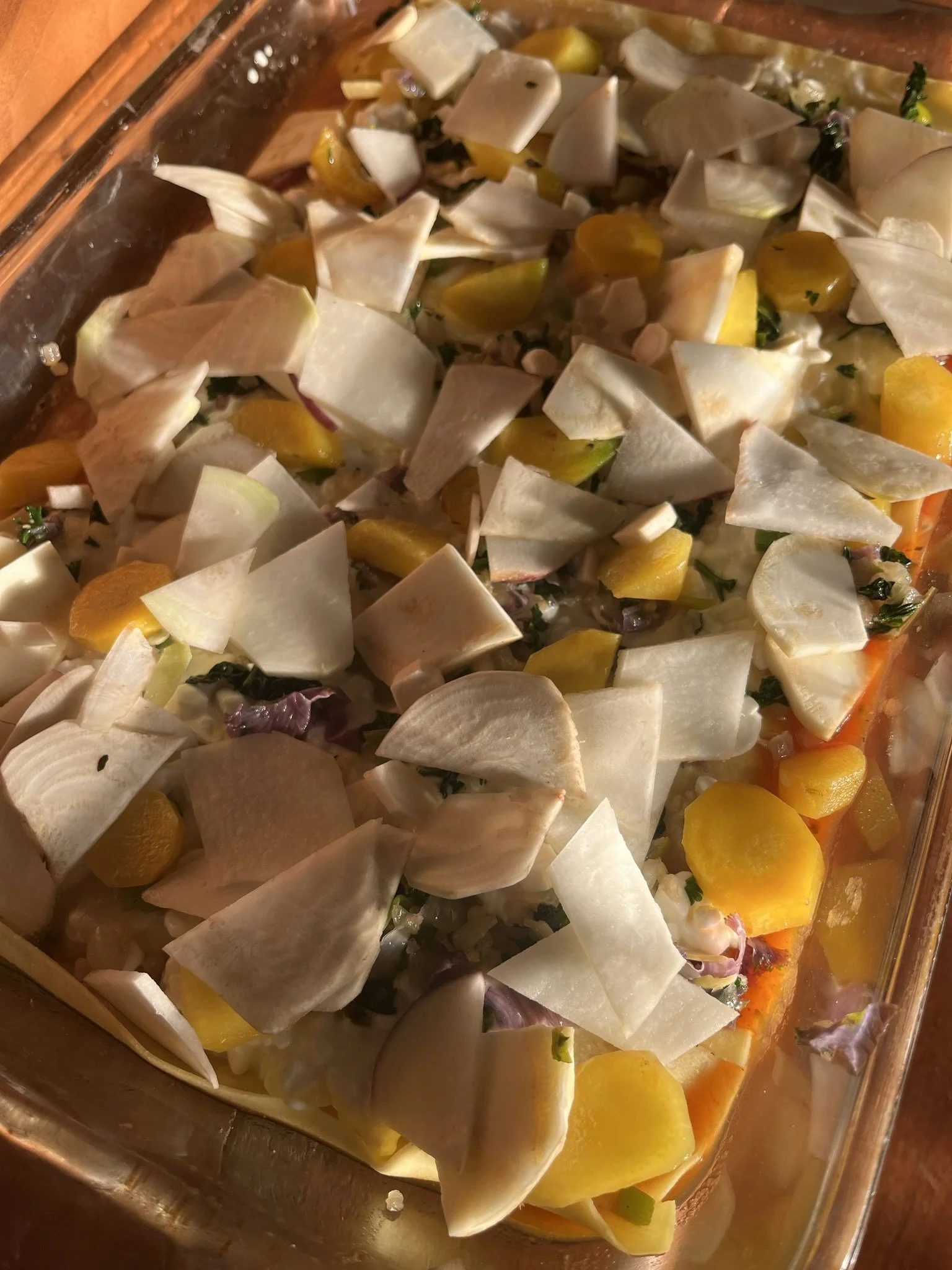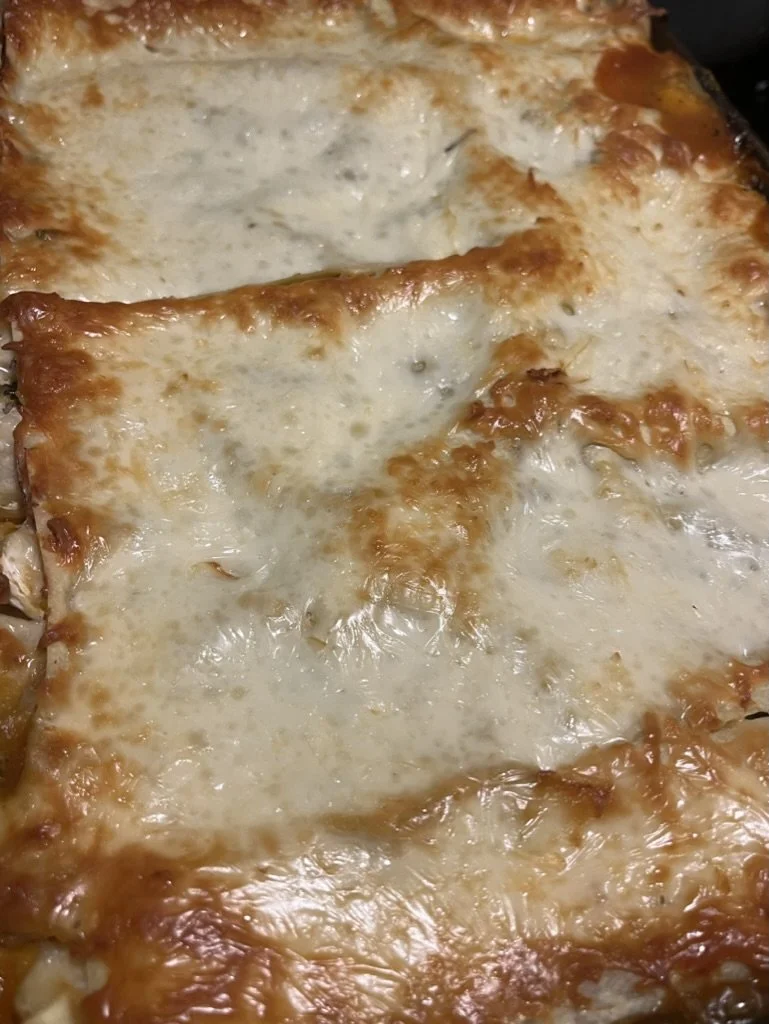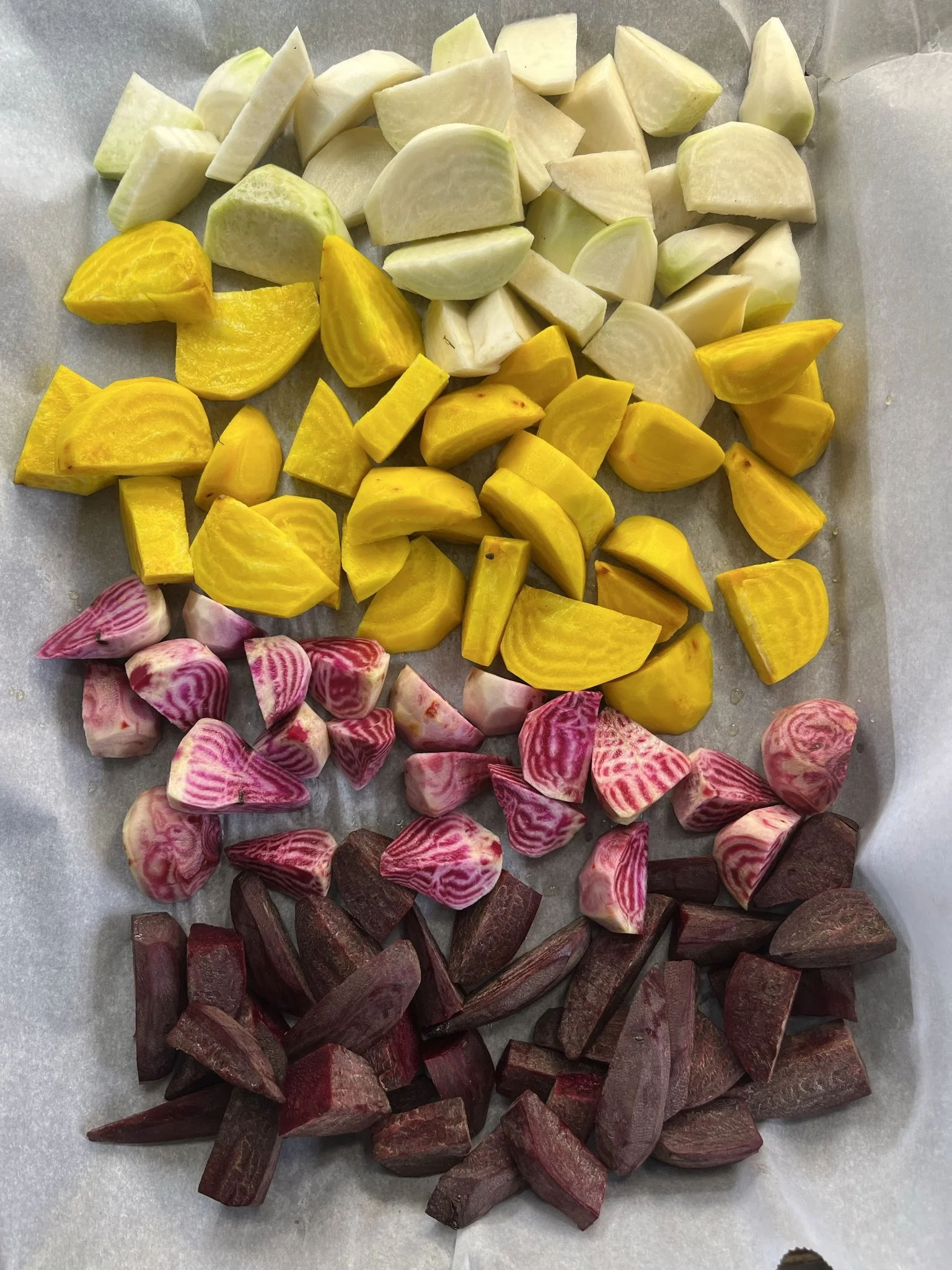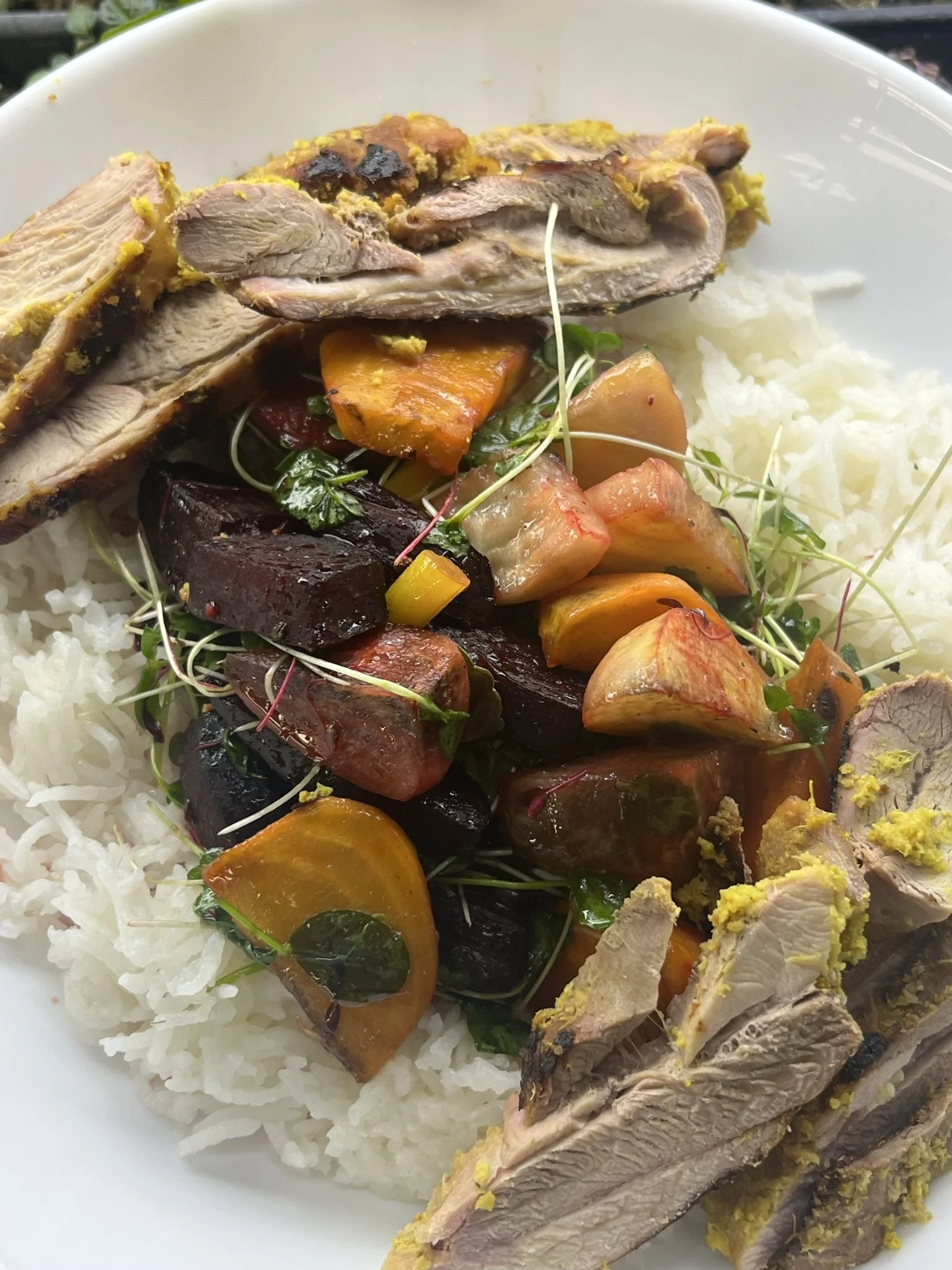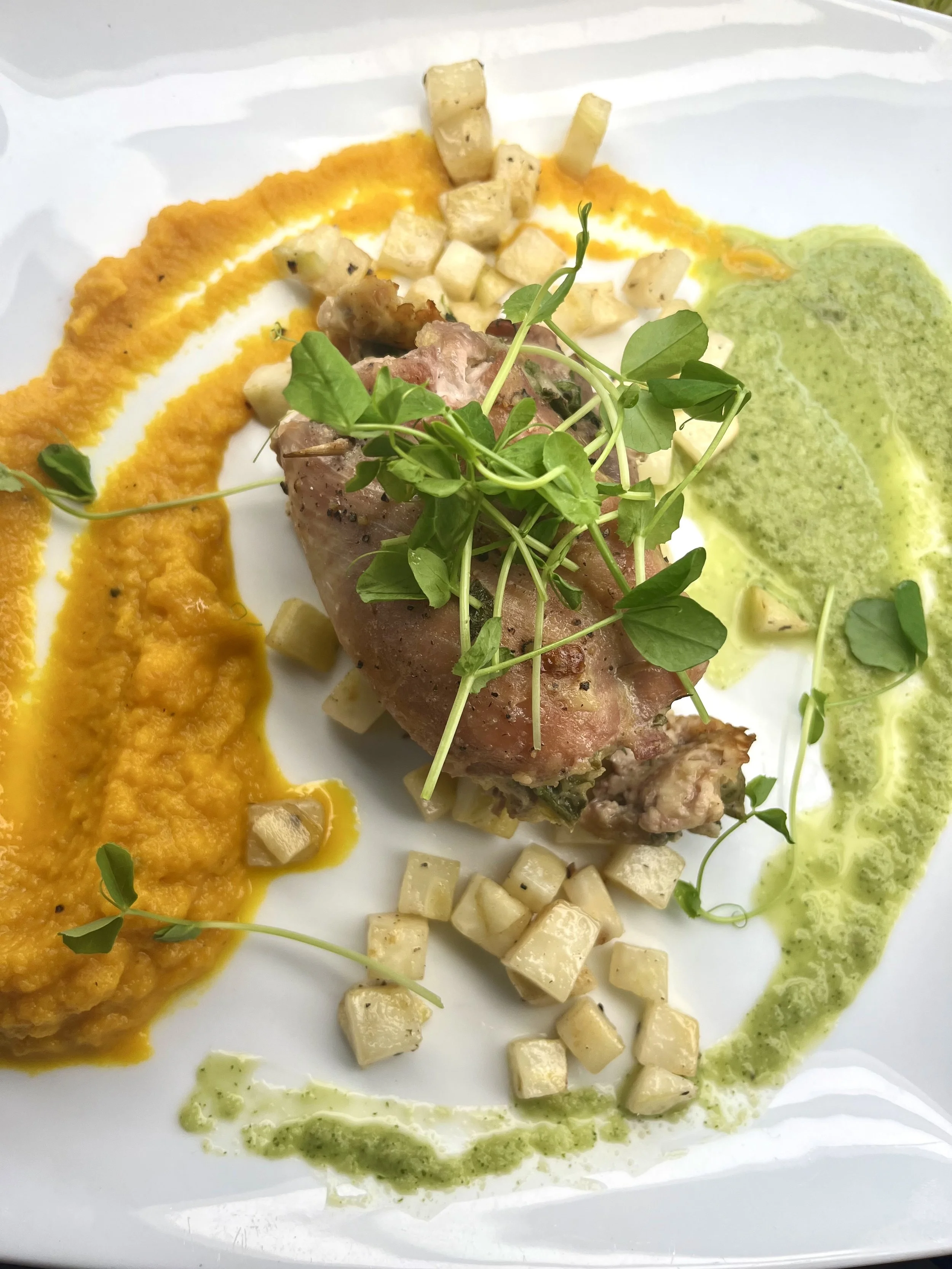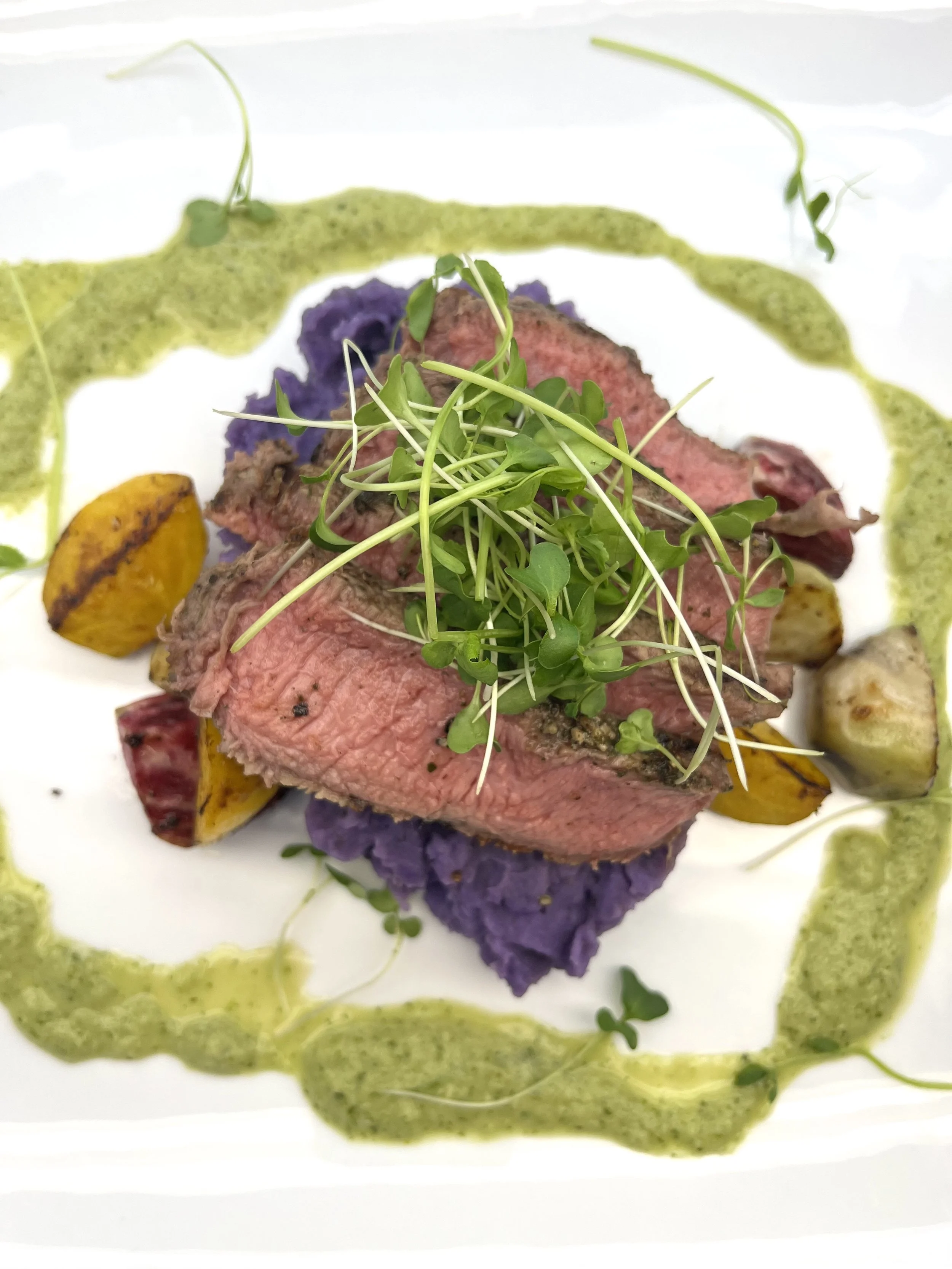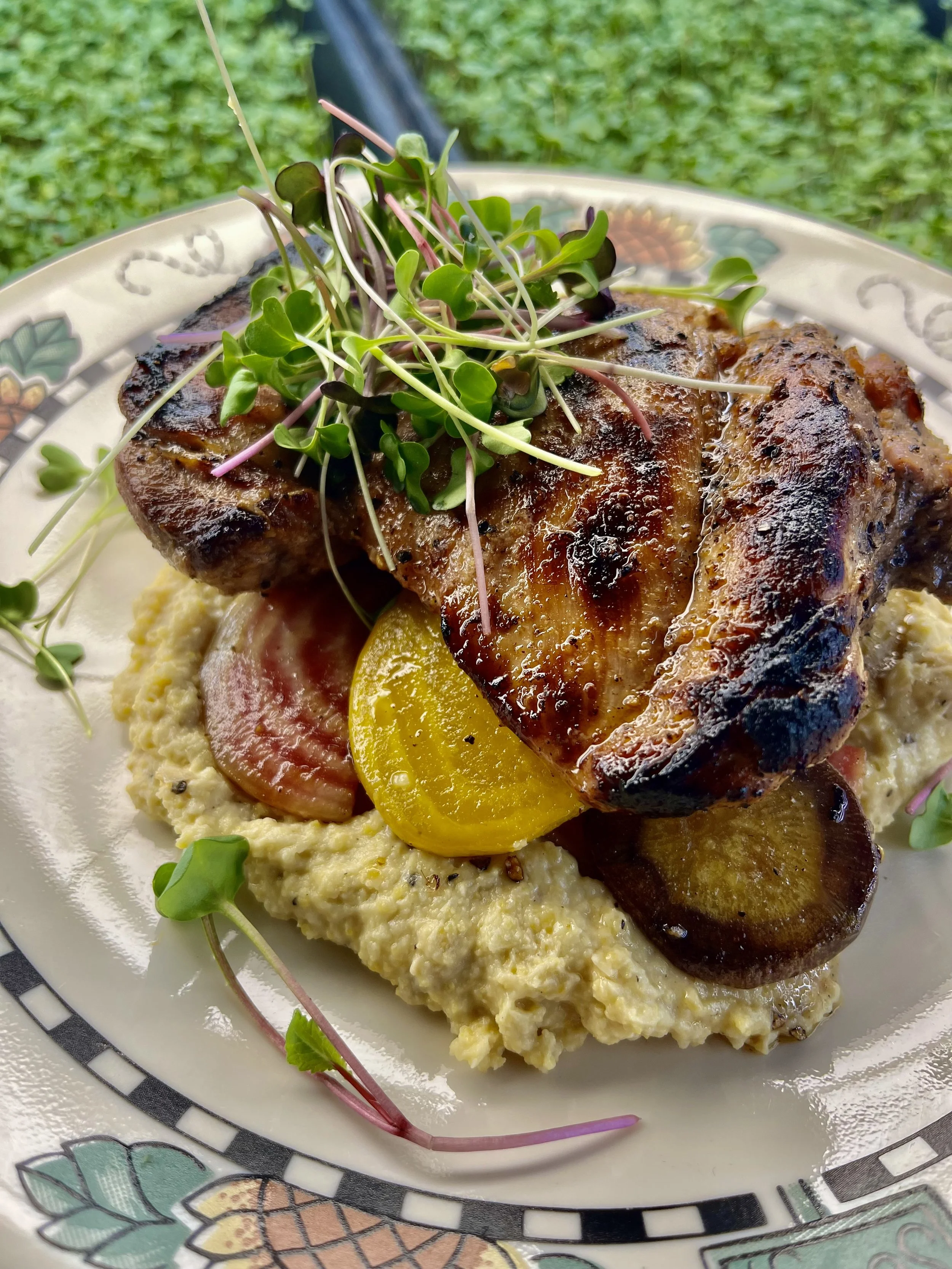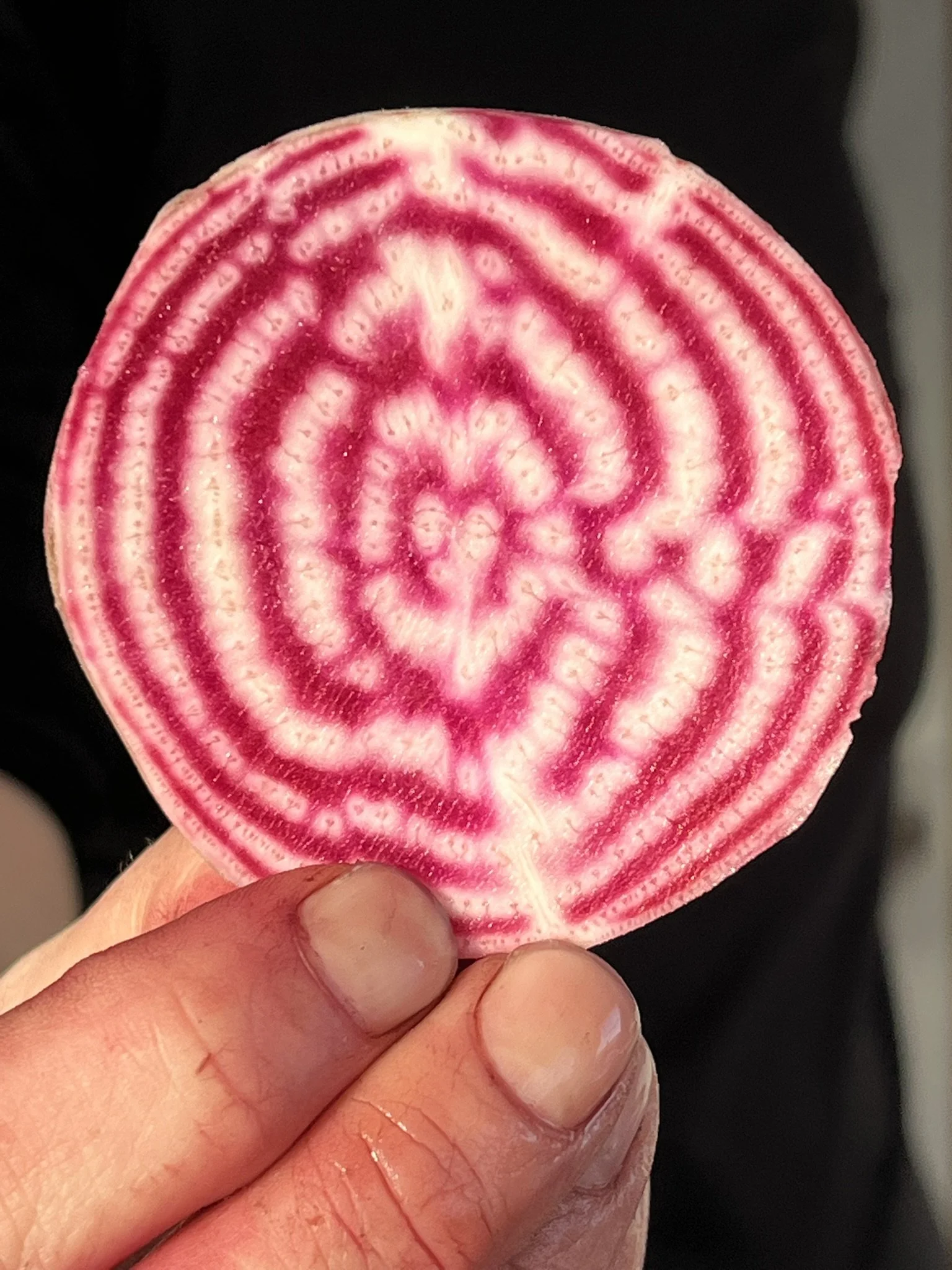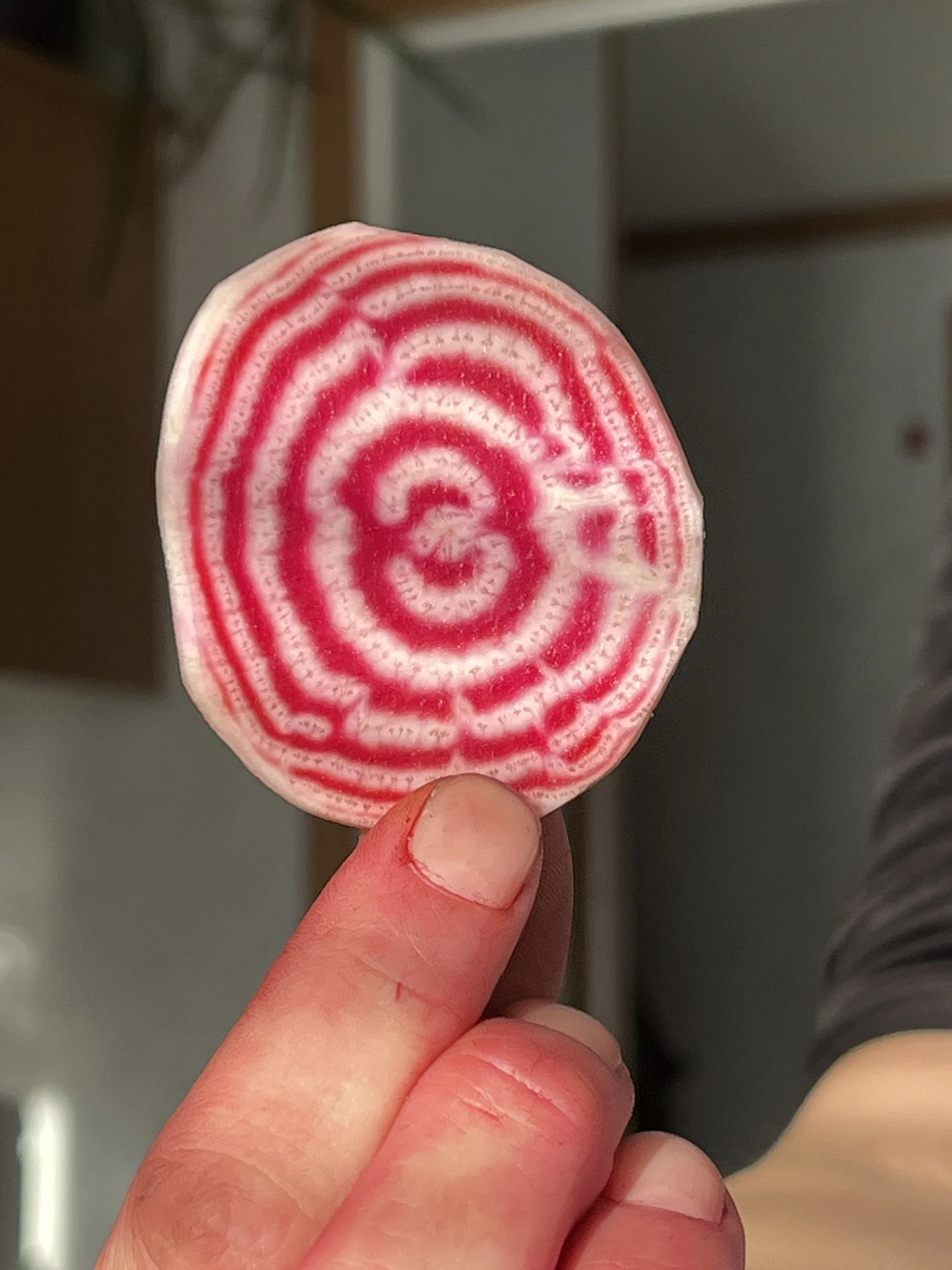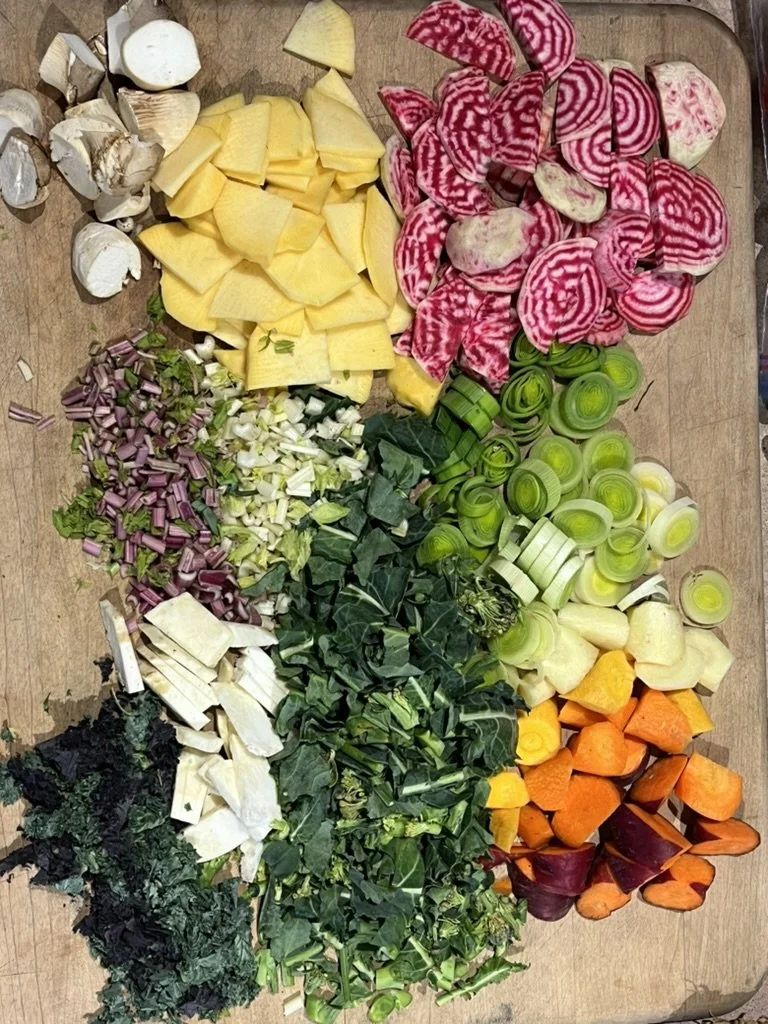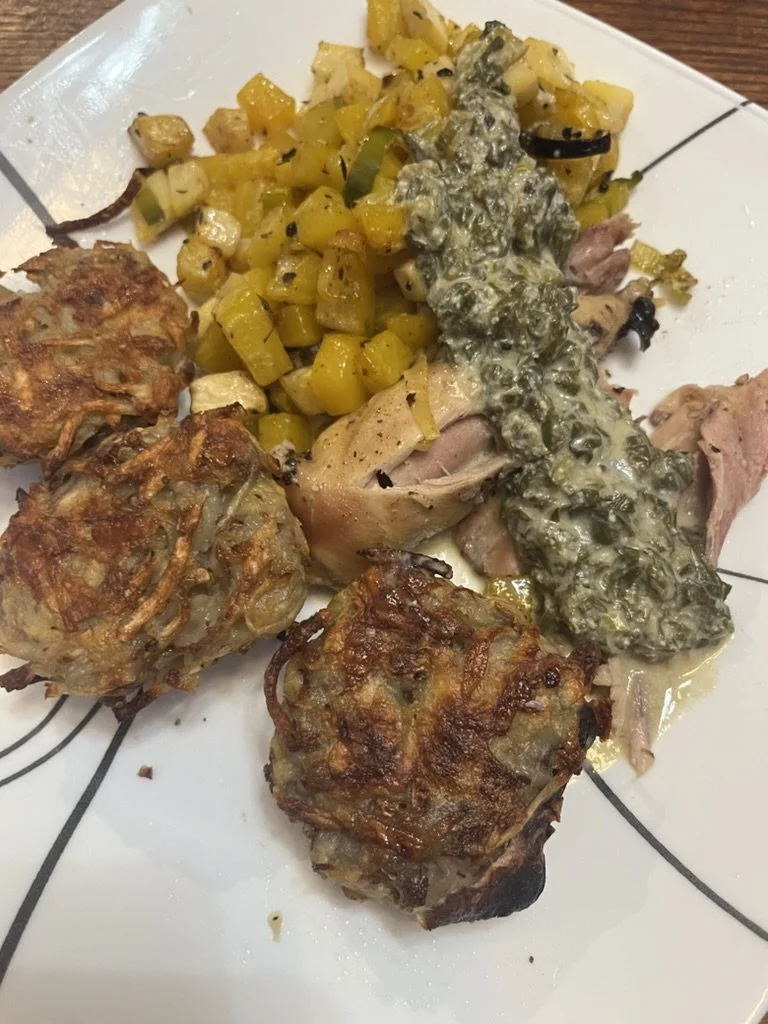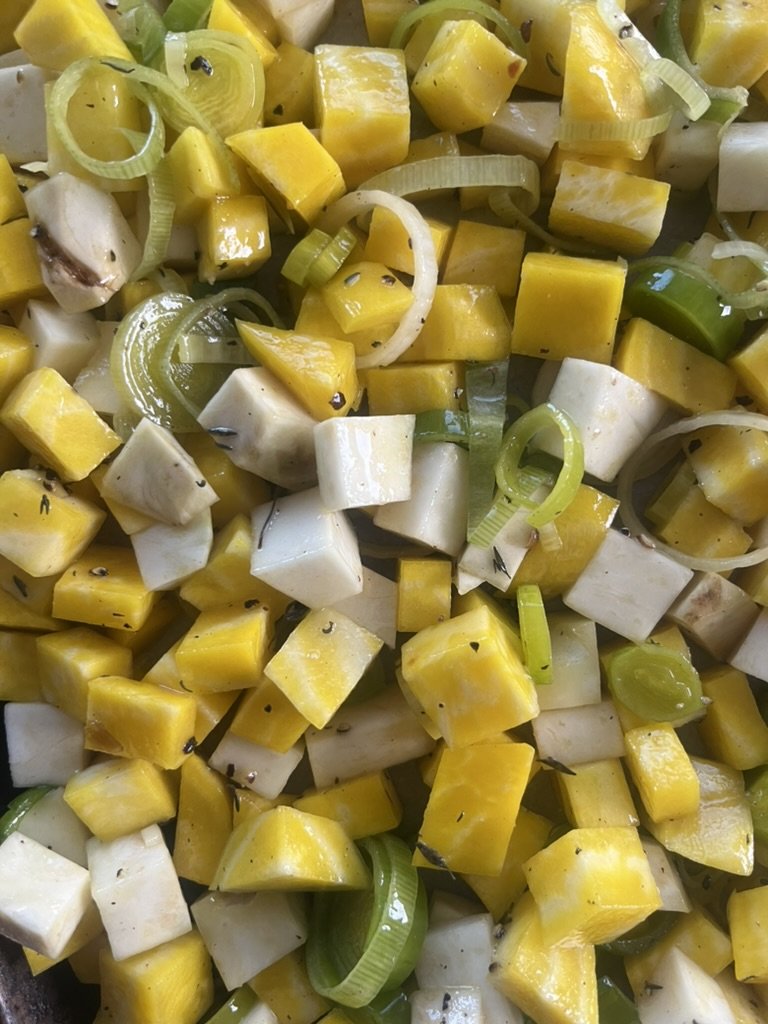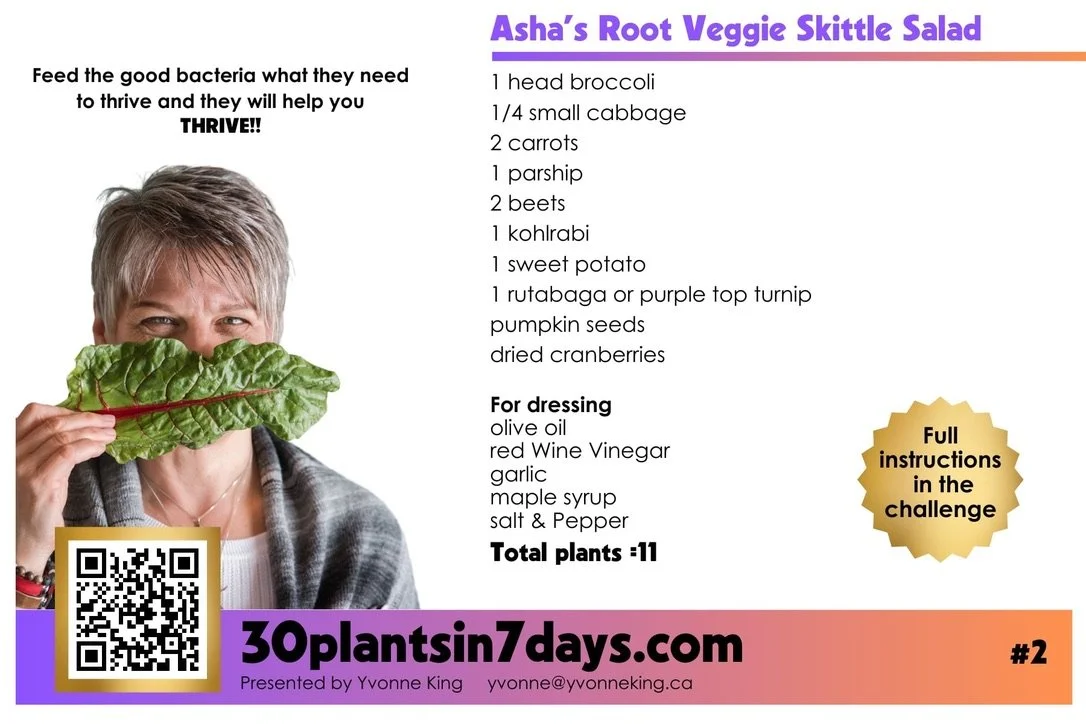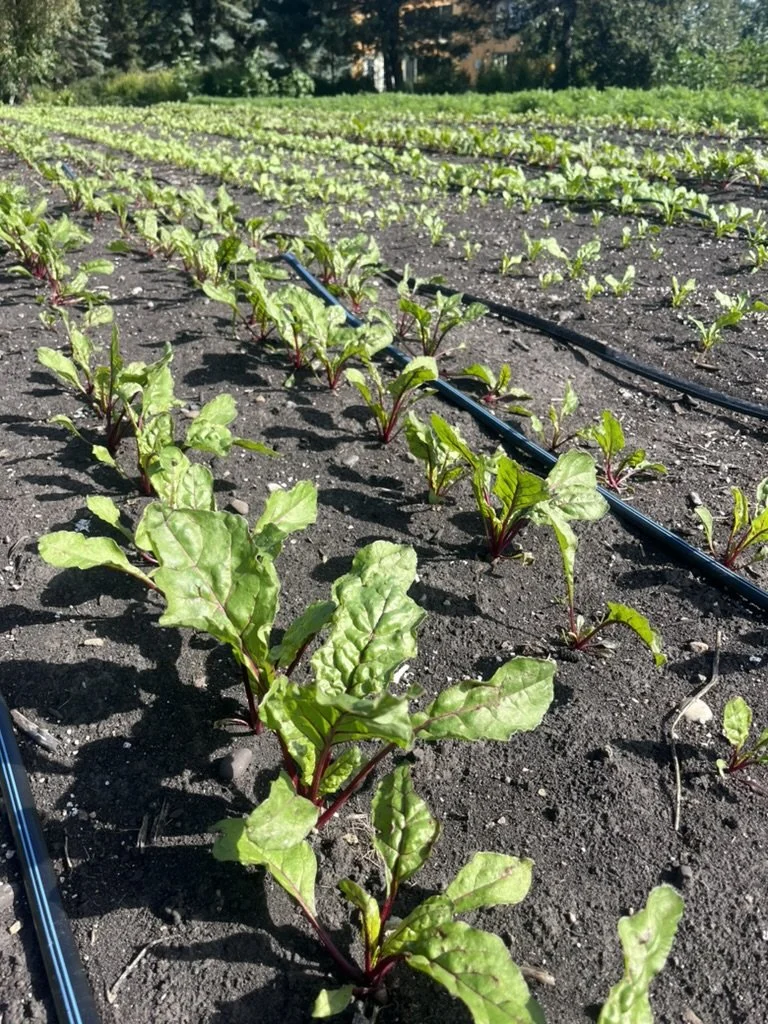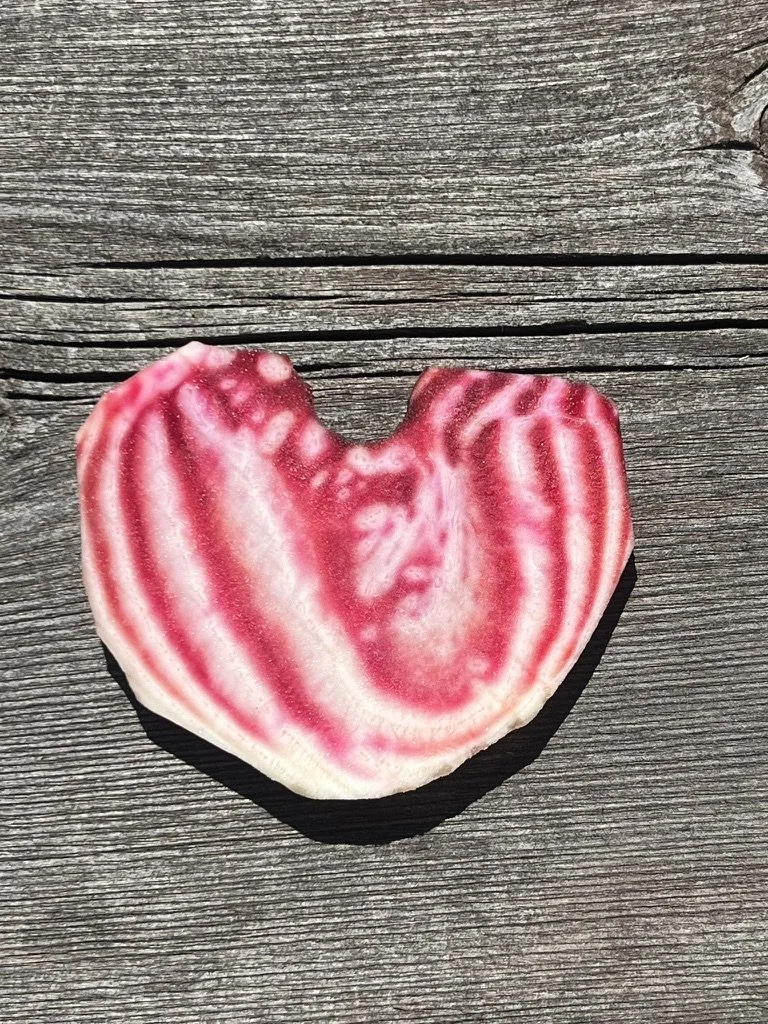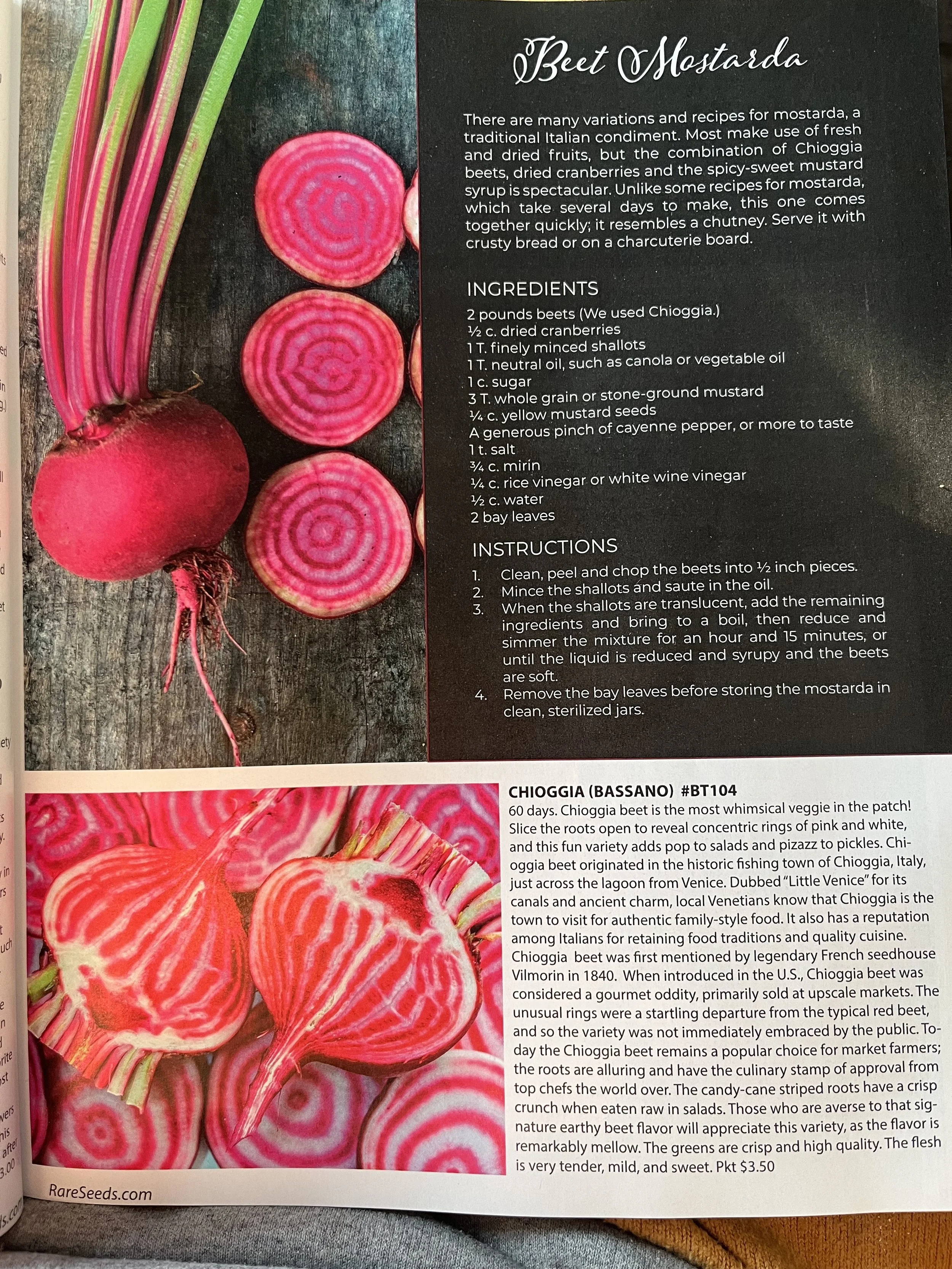Beets - Red, White, Golden & Candy Stripe
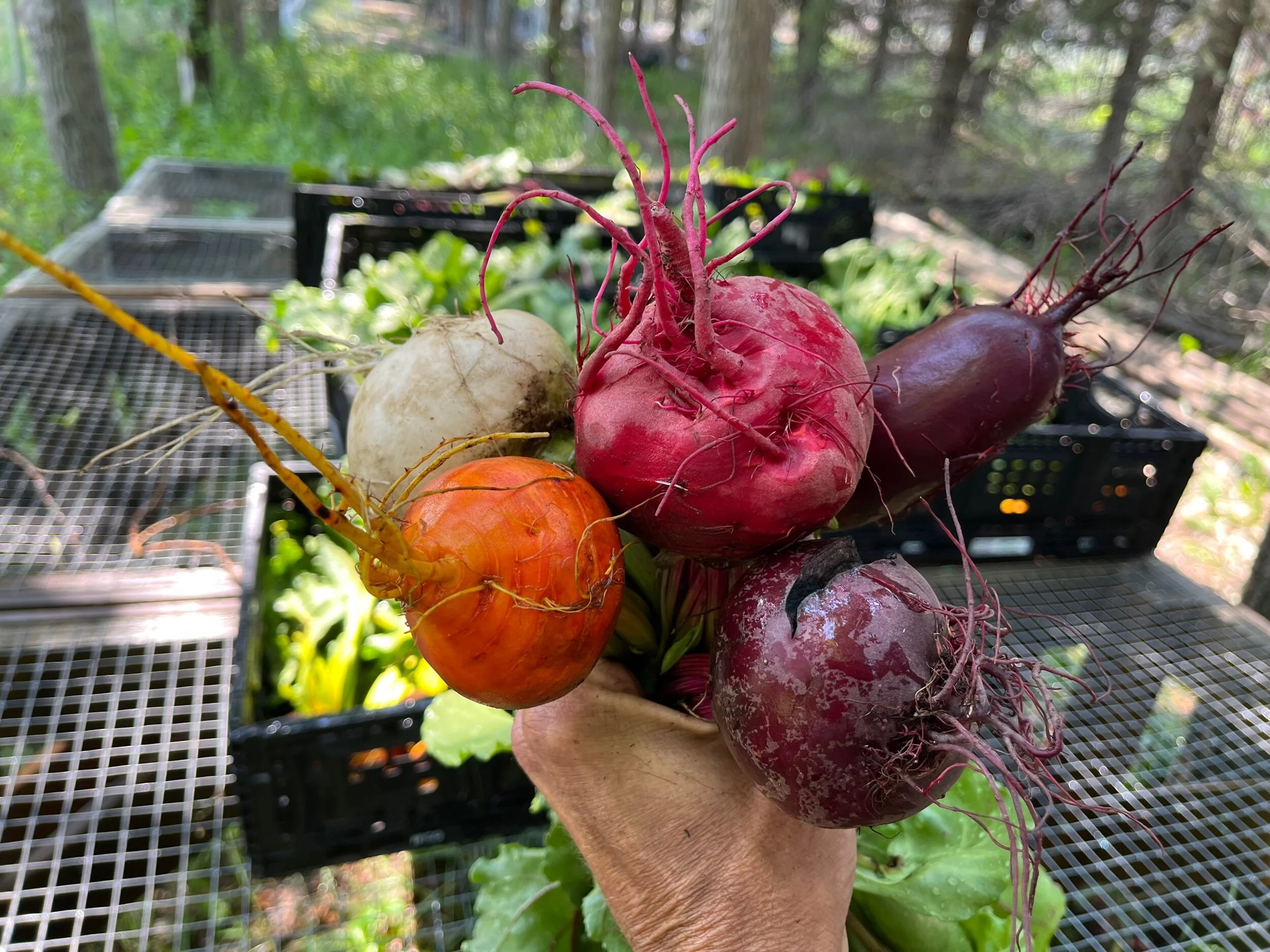
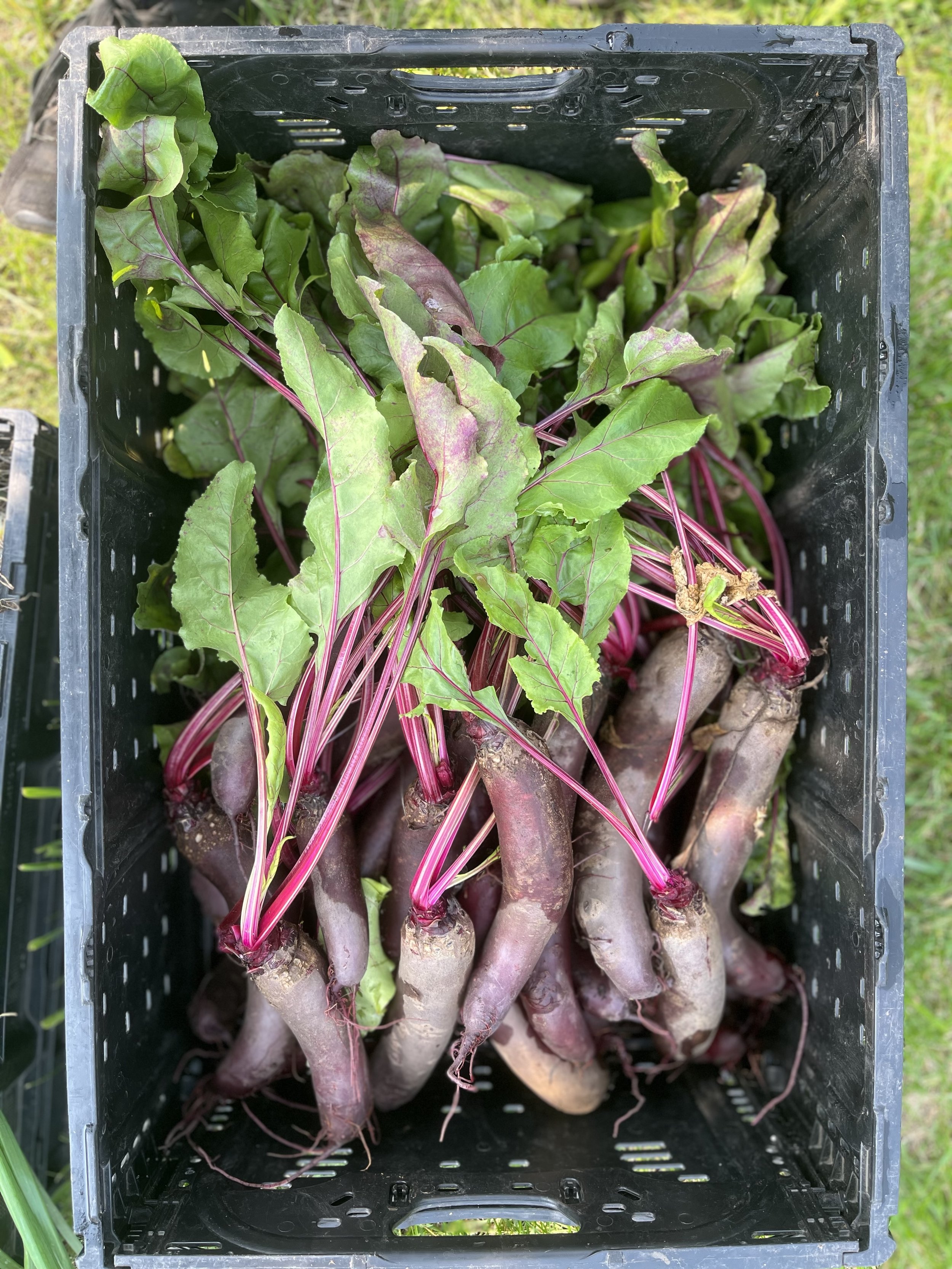
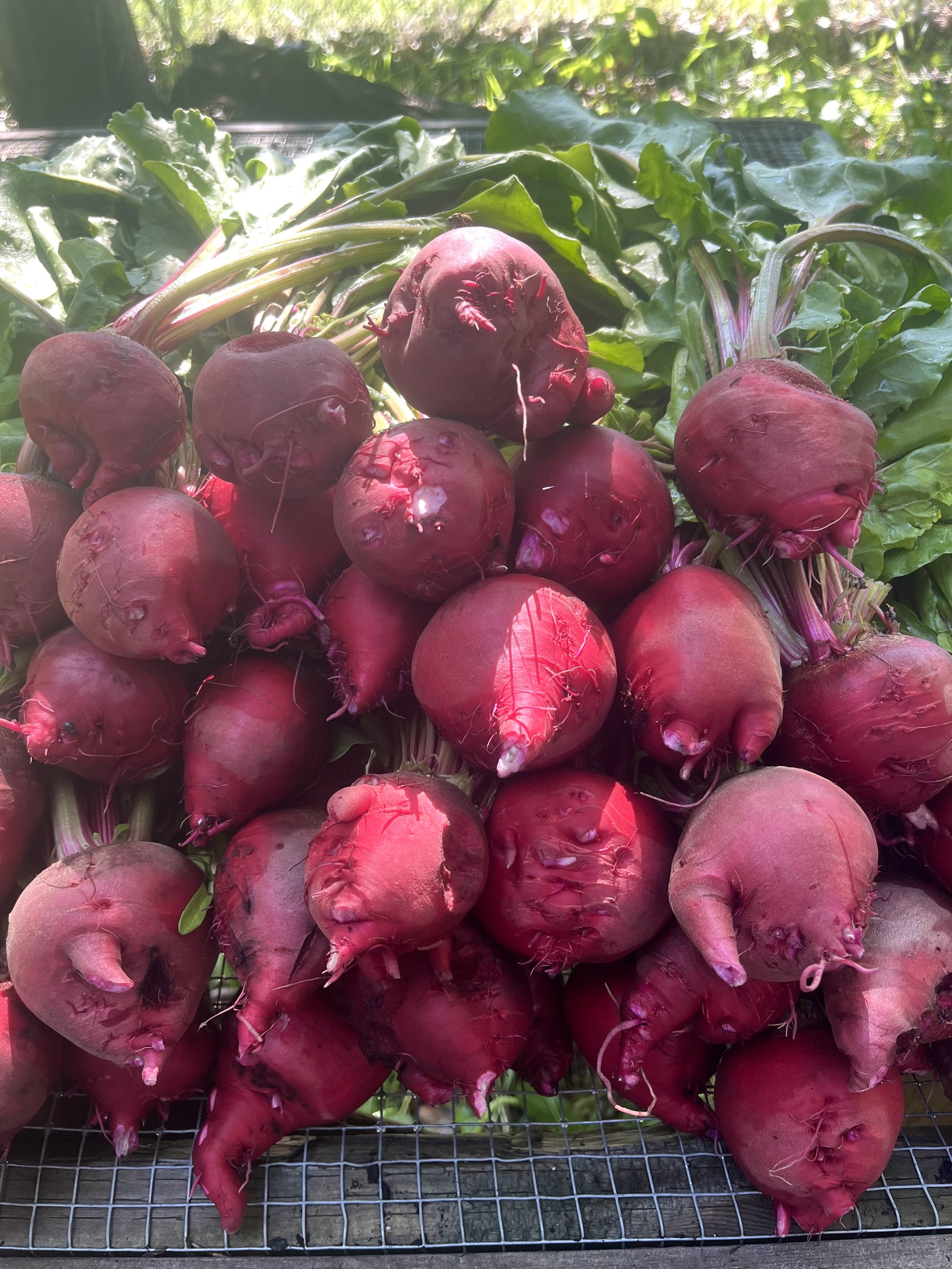
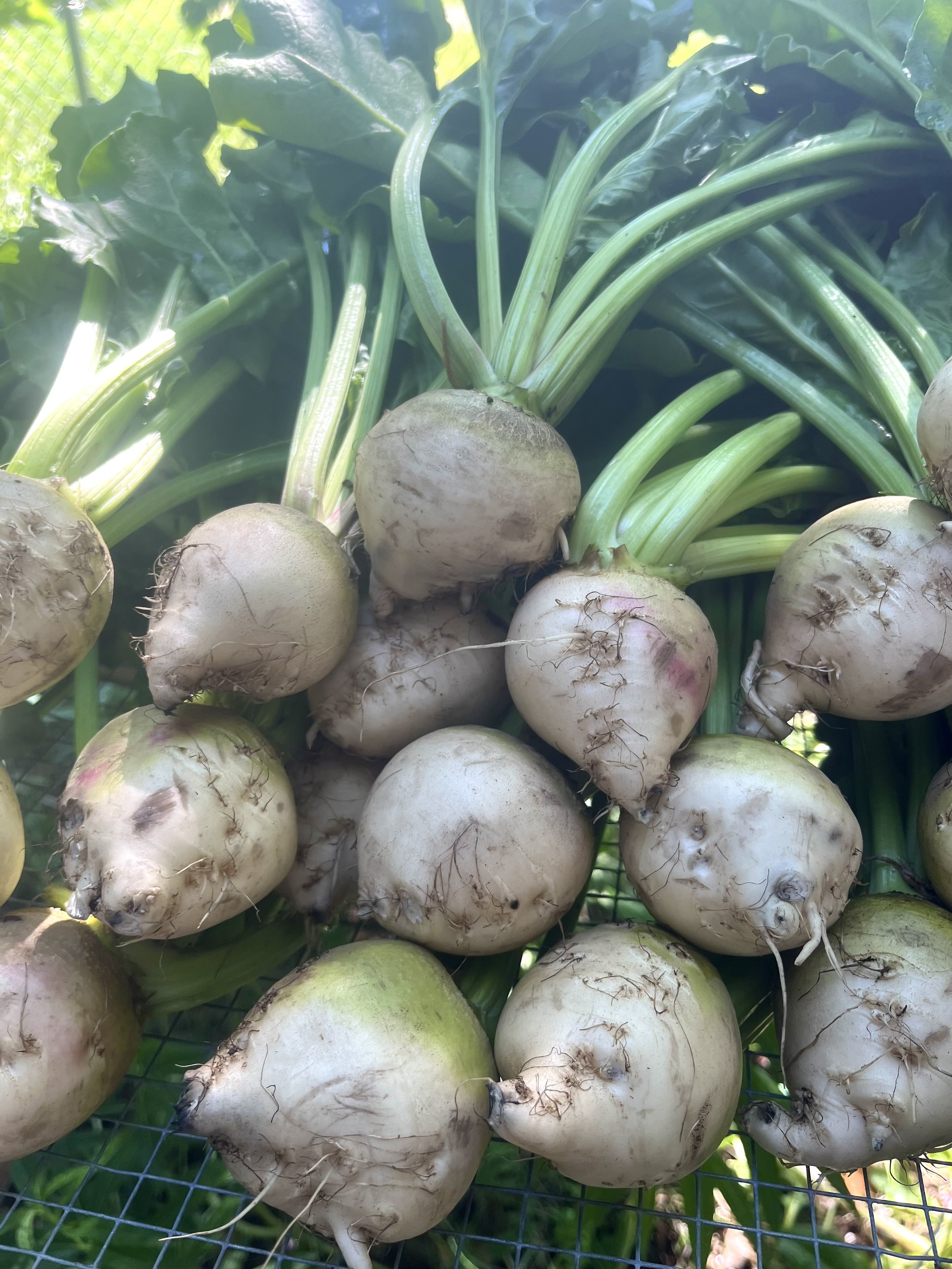
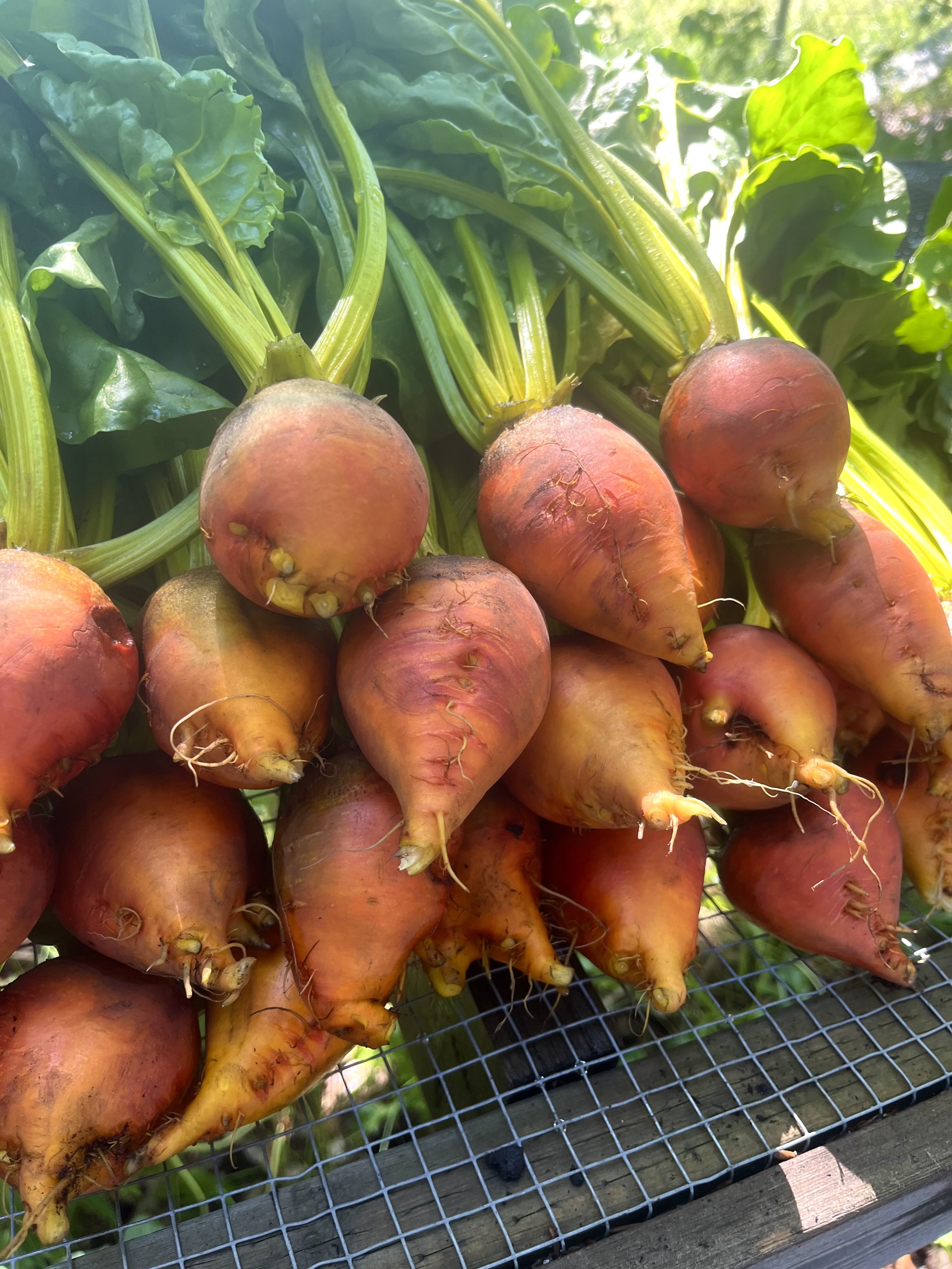
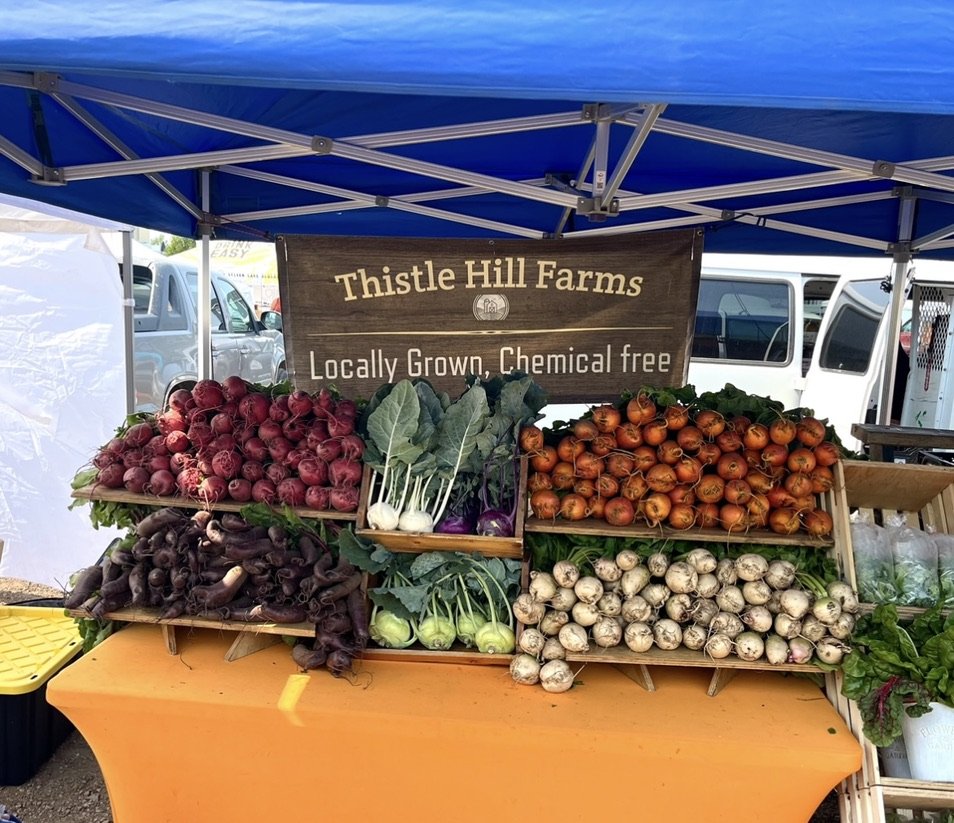
Beets - Red, White, Golden & Candy Stripe
1.5lb bags. The roots will keep with their tops removed for 2-3 weeks when stored in the refrigerator. It is important to note that the skin should be removed before eating and is easily peeled once cooked. The leaves will only last days once removed from the roots and stored in a plastic bag in the refrigerator. The leaves are also edible and can be used in recipes as spinach or swiss chard substitute.
Golden Rounds - Striking golden-fleshed beet. Smooth, golden roots with bright yellow flesh retain their colour when cooked. Excellent, sweet flavour. Gold beets can be consumed raw and are popularly shaved, shredded, julienned, or spiralized into salads, slaws, and soups. They can also be pickled for extended use, pureed for sauces, or blended into smoothies. When utilized in cooked preparations, they can be steamed with lemon juice, roasted for a caramelized consistency, or sliced and baked into thin chips.
Chioggia - This gorgeous beet is an heirloom variety called Chioggia or known as Candy Stripe, Candy Cane and Bull’s Eye. It has become a staple here at Thistle Hill Farms for it’s different coloured stripes and earthy flavouring.
Due to their beauty they are often used raw, sliced into salads or as a garnish. They are equally as tasty roasted, boiled, fried and steamed. To maintain the vibrate colour coat in lemon juice or vinegar. When added into fresh juice or homemade dips like hummus it will create a stunning barbie pink colour throughout. We dehydrated them to created a powder for a natural food and make up dye. They are the main ingredient used to create our pink and burnt orange dill pickled beets.
White - Have you heard of white coloured beets? It’s pretty unusual heirloom variety to find, definitely have to search at your local market for these bad boys but totally worth the hunt.
They lack betalain, which is the pigment found in the flesh that gives other beet varieties their red, orange, and yellow hues. This pigment acts as antioxidants, but they also contribute to the darker coloured beet’s earthy flavour. Perfect for anyone that would prefer a much milder and sweeter beet. Always recommend this variety for picky eaters and children alike. The roots contain high levels of glycine betaine. This phytochemical compound fights platelet clots and plaque formation in the arteries. Along with a wealth of potassium, calcium and vitamin A.
Family favourite for juicing, since we find it doesn’t overpower the other ingredients. To remove the skin use a vegetable peeler or wrap in tinfoil and bake in the oven until fork tender and let cool, the skin should just rub right off. The smaller beets we leave the skin on. Totally suitable to use raw, sliced thin in salads or grated into coleslaws. They are excellent steamed, boiled, roasted, or baked. They pair wonderfully in soups and stews since they will look just like potato but add a different texture completely. Great addition to potato salads and mashed potatoes. Feel free to use in replacement to any other colour beet in recipes. We use this colour to create our dill pickled white and burnt orange beets. When the greens are still attached during our spring through fall months we love incorporating in place of spinach, lettuce, swiss chard or kale. They work great as a wrap replacement due to its nice thicker texture and medium sized leaves.
Red Round - They are popularly consumed raw in salads or are utilized in cooked applications. Try them roasted and incorporated into soups, burgers, and quiche, cooked into pasta, blended into sauces, or sliced thinly into wedges and fried into chips. They can also be mixed into hummus or used in baked goods such as cupcakes, cheesecake, tarts, and brownies. Wear gloves and use caution when peeling or handling to prevent staining of the skin and any clothing.
Long Red - They are widely used in processing because of their uniform shape and size, which allows for greater regularity when slicing than with round varieties. The roots are also favoured by chefs and home cooks for their shape and can be used in any recipe calling for beets. They are used raw in salads and smoothies and are ideal for pickling, roasting, baking or steaming. They can be sliced, diced, shredded or julienned and added to soups, pasta, stir-fries, or served alongside savoury sausages and meats. Wear gloves and use caution when peeling or handling to prevent staining of the skin and any clothing.
Beets pairs well with;
Fruits and Vegetables; garlic, garlic scapes, radishes, apples, fennel, potatoes, shallots, clementines, grapefruit, lemon, raspberries, blueberries, pears, avocados, greens such as kale, spinach, arugula, ginger, scallions and carrots.
Dairy and Meat; pecorino, brie, gorgonzola goat, feta, and manchego cheese, yogurt, sour cream, butter, poultry, fish, and bacon.
Other; pea shoots, summer savoury, tarragon, dill, parsley, and mint, vinegar, lemon juice, almonds, pistachios, pepitas, pine nuts, mustard and walnuts.
Beet, Mozzarella and Basil Salad
ROASTED BEET SALAD WITH SHALLOT, BLACK WALNUT AND GREENS
Chioggia Beet Borani with Feta and Toasted Sesame Seeds
Roasted White Beet Salad with Gala Apples



